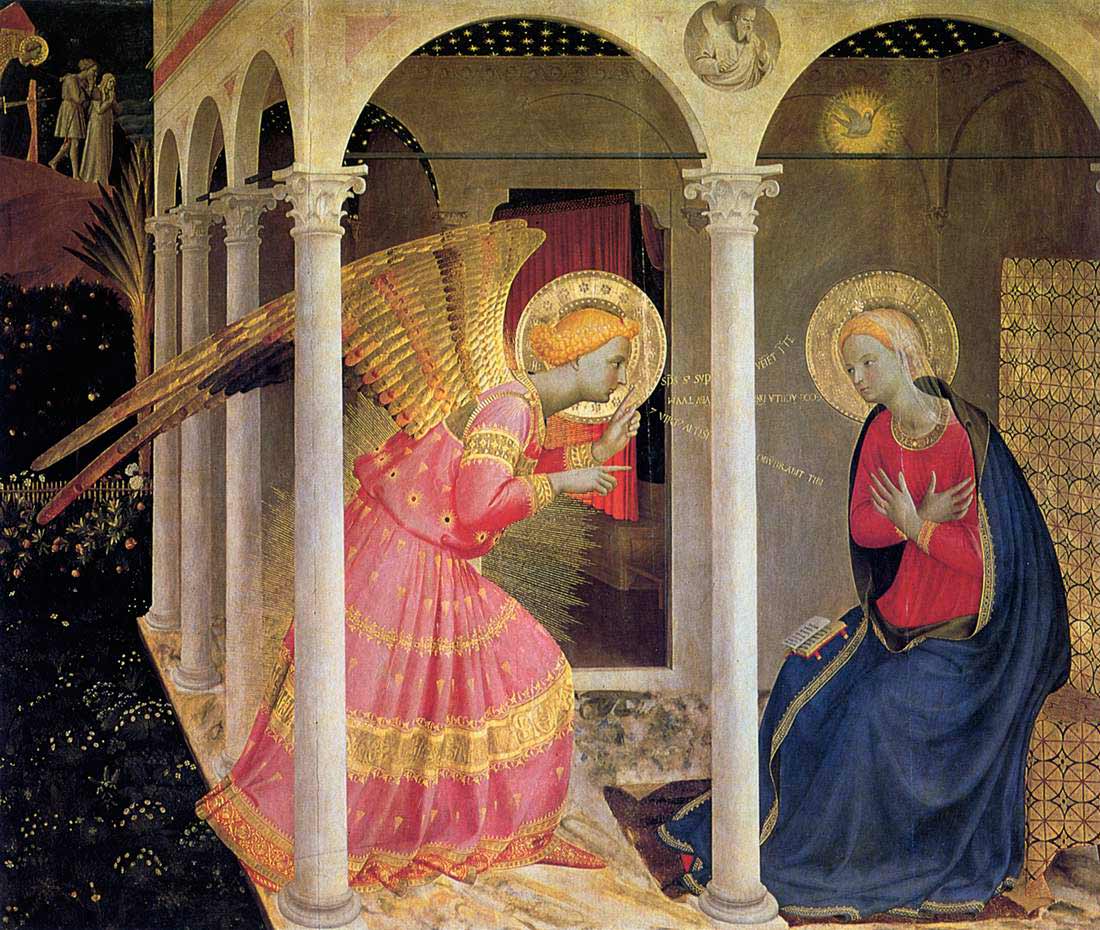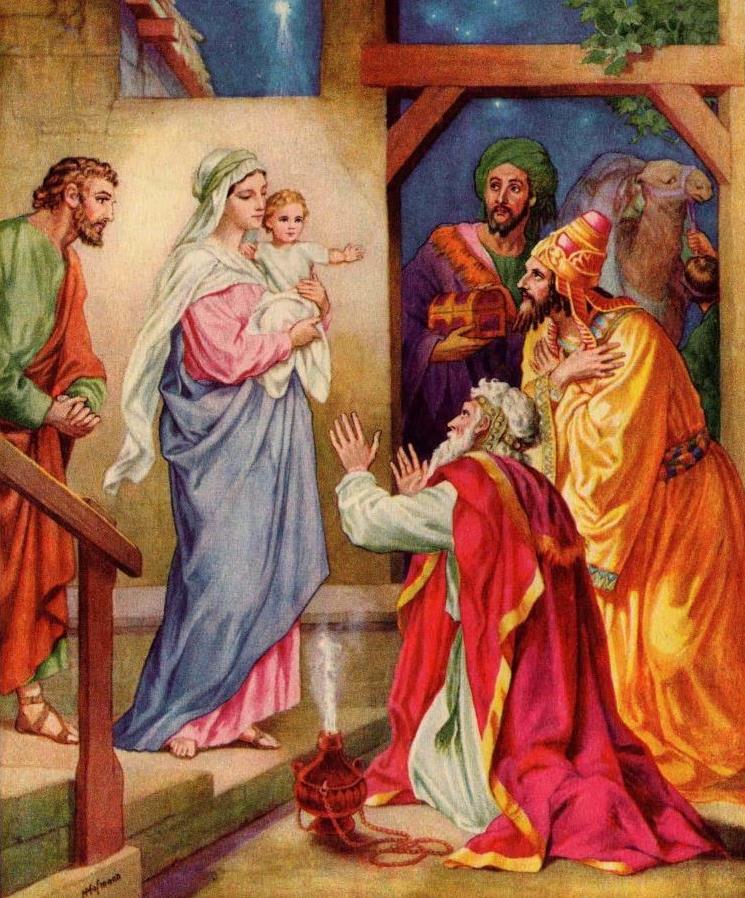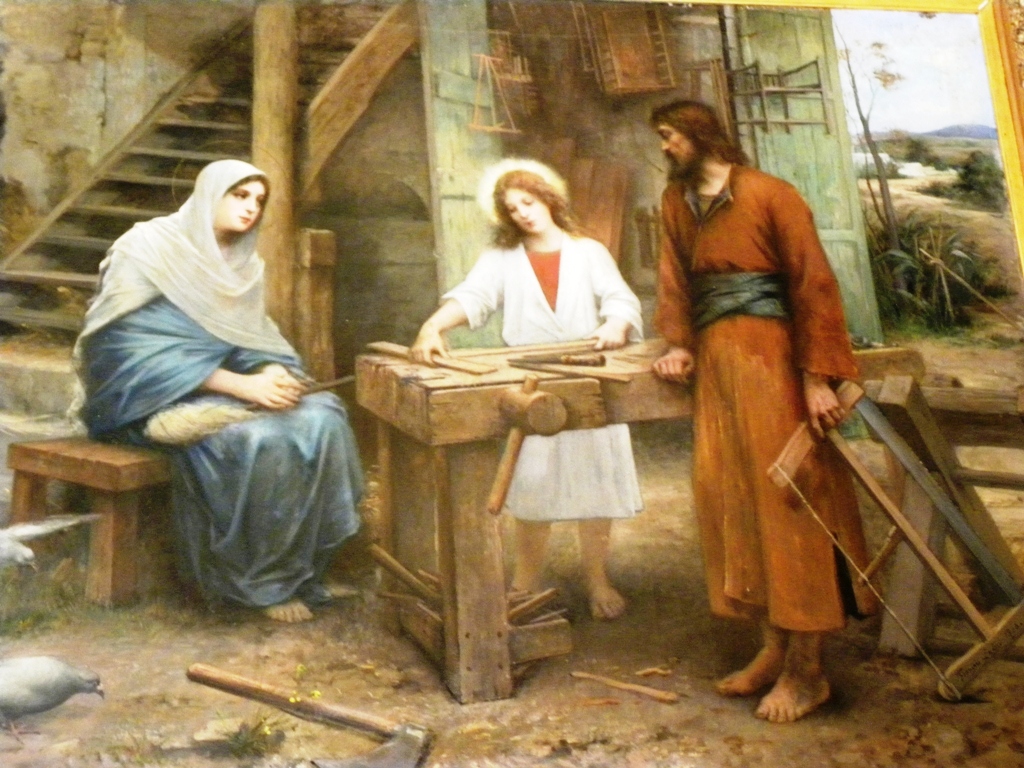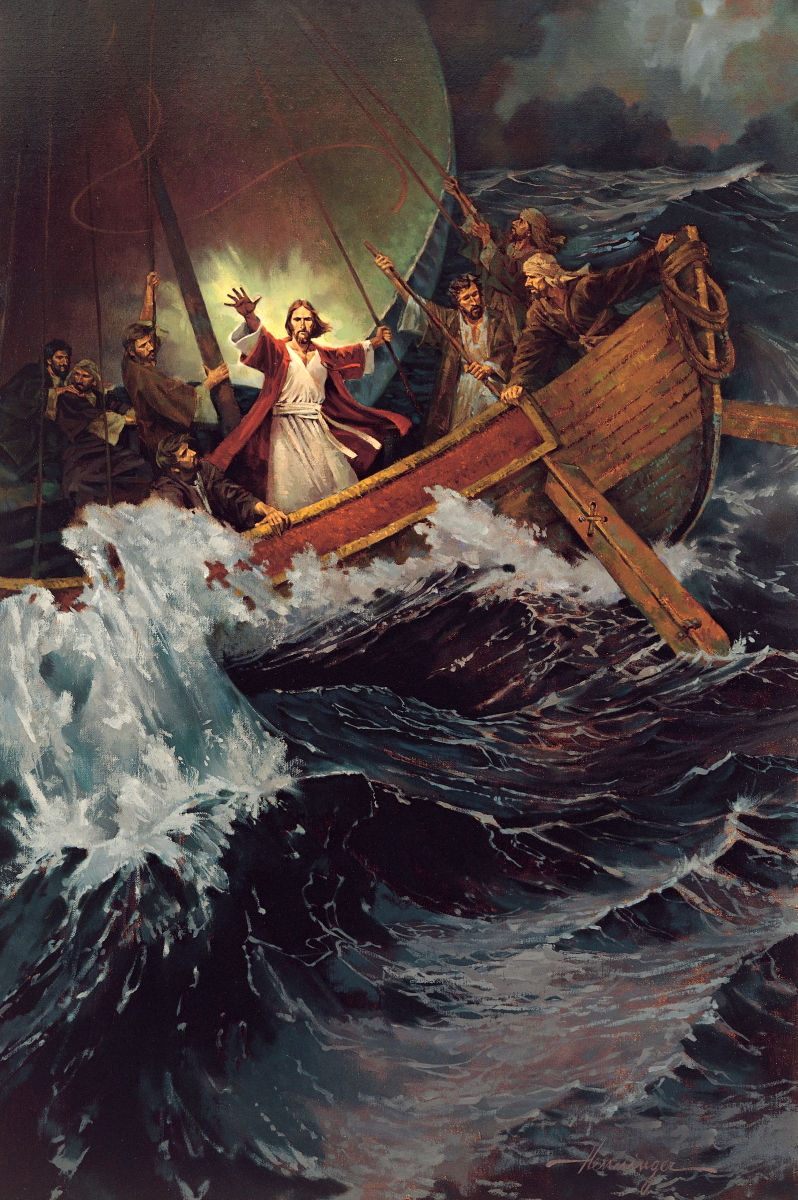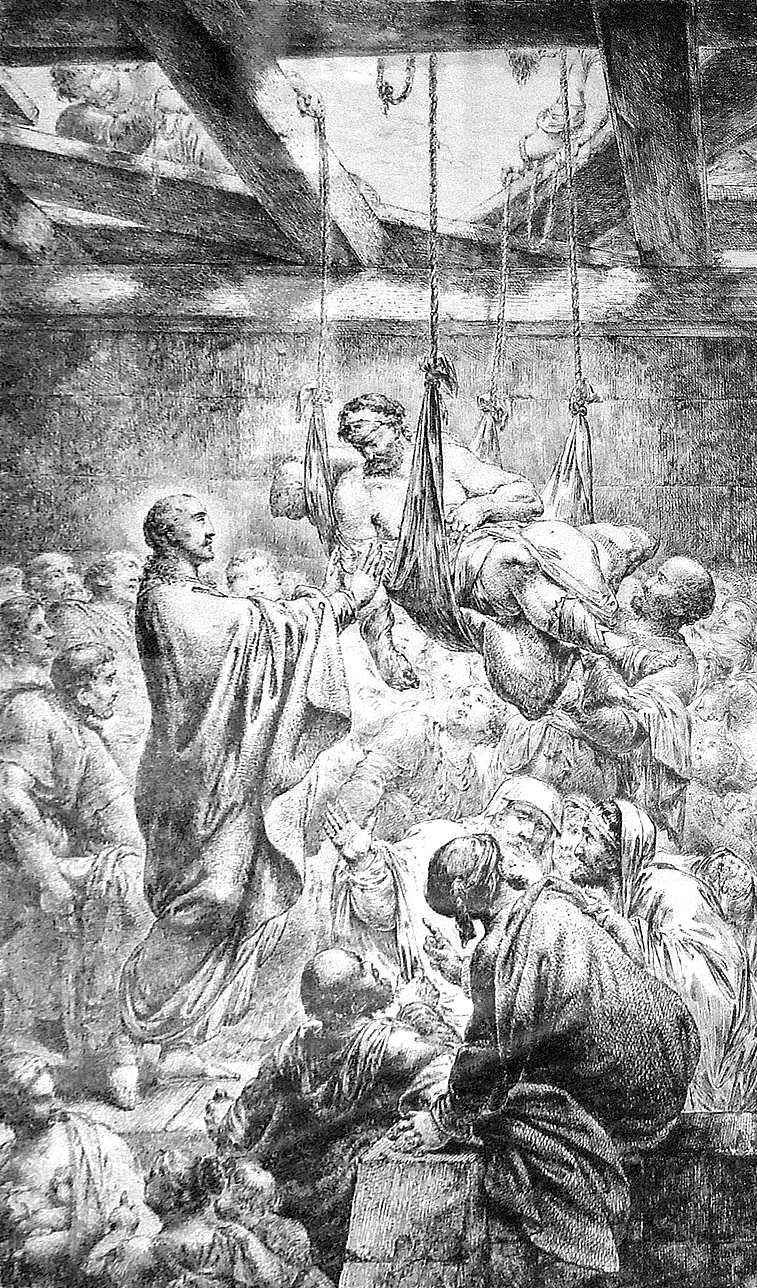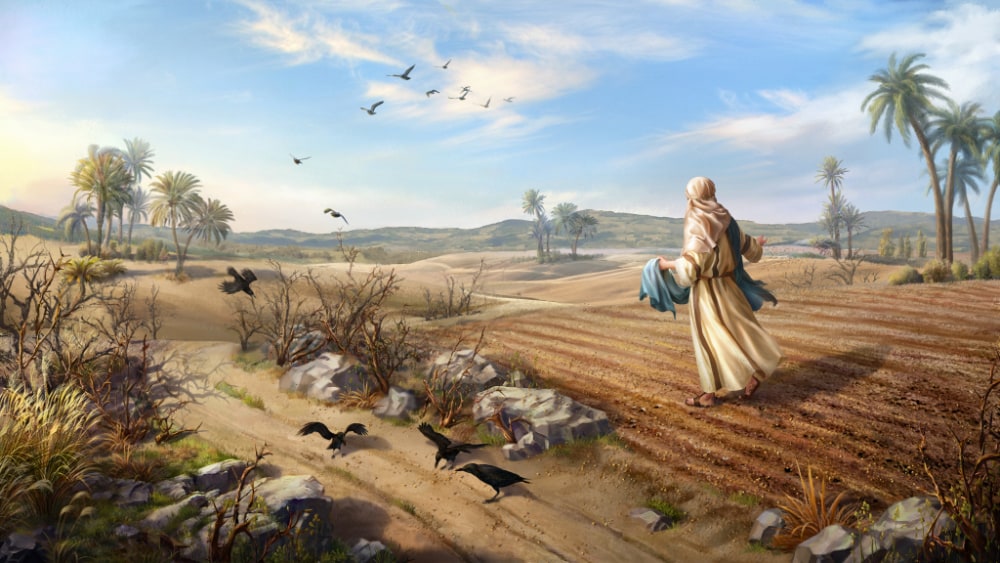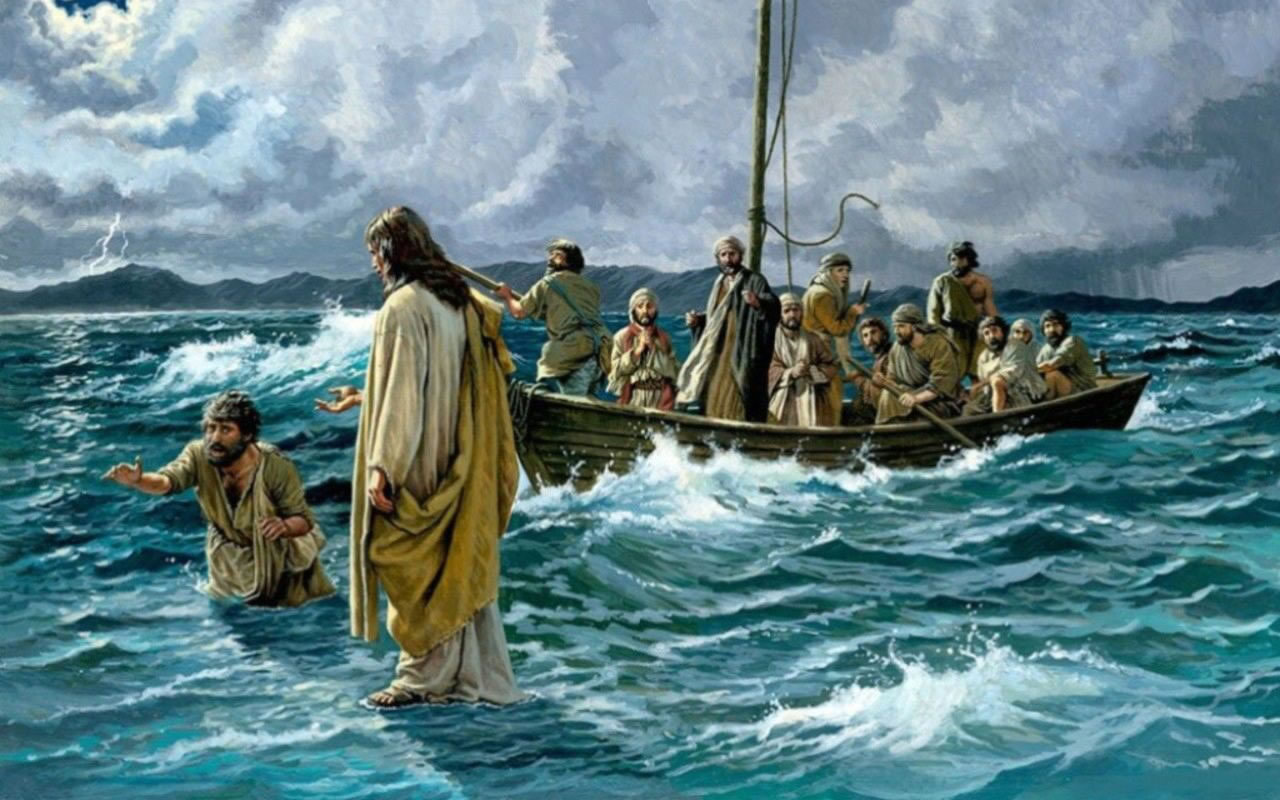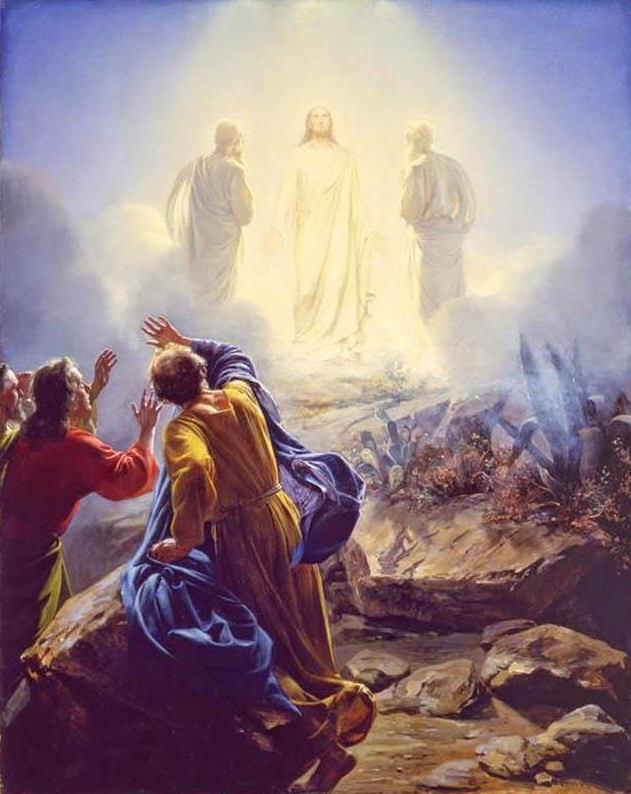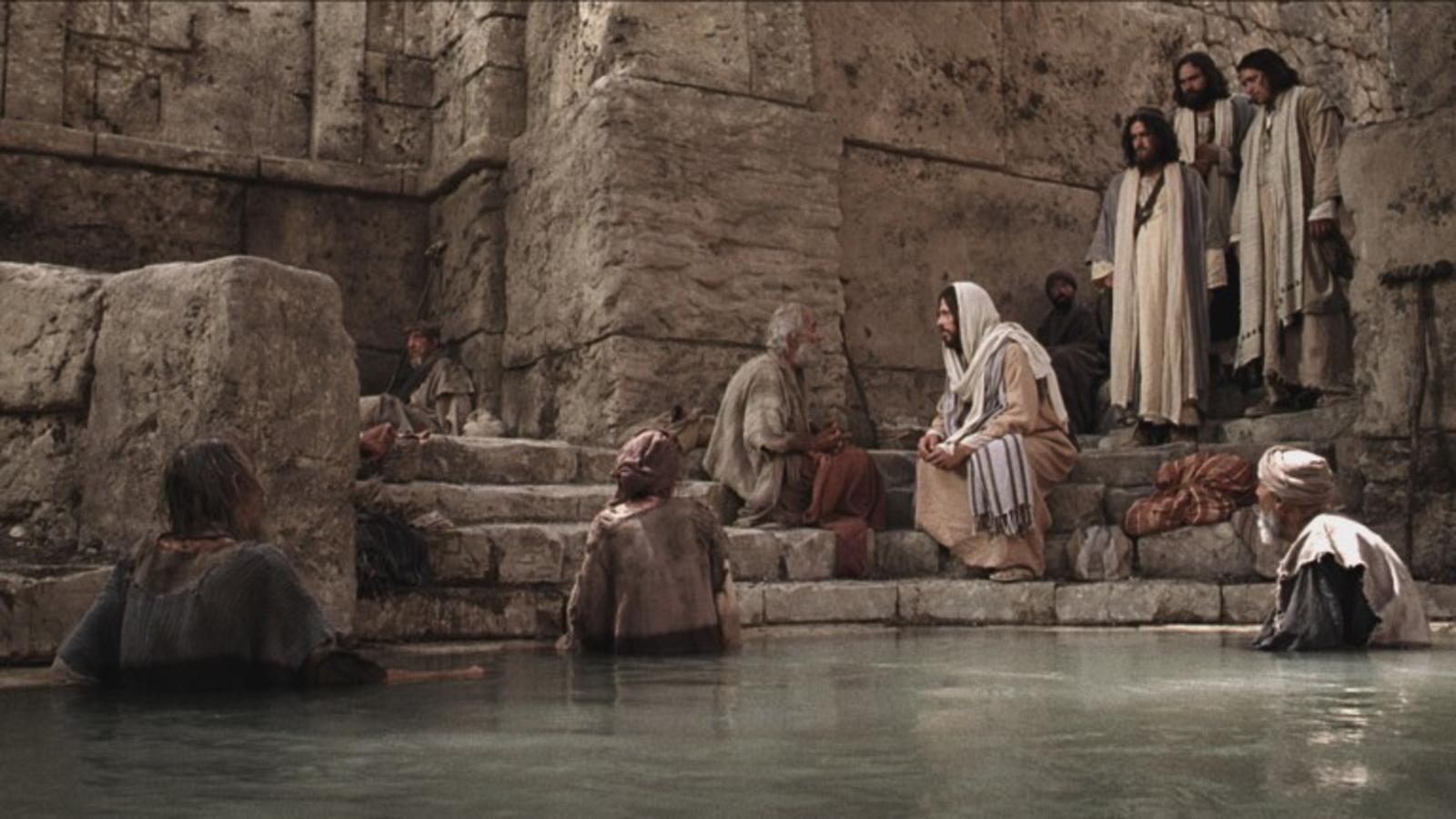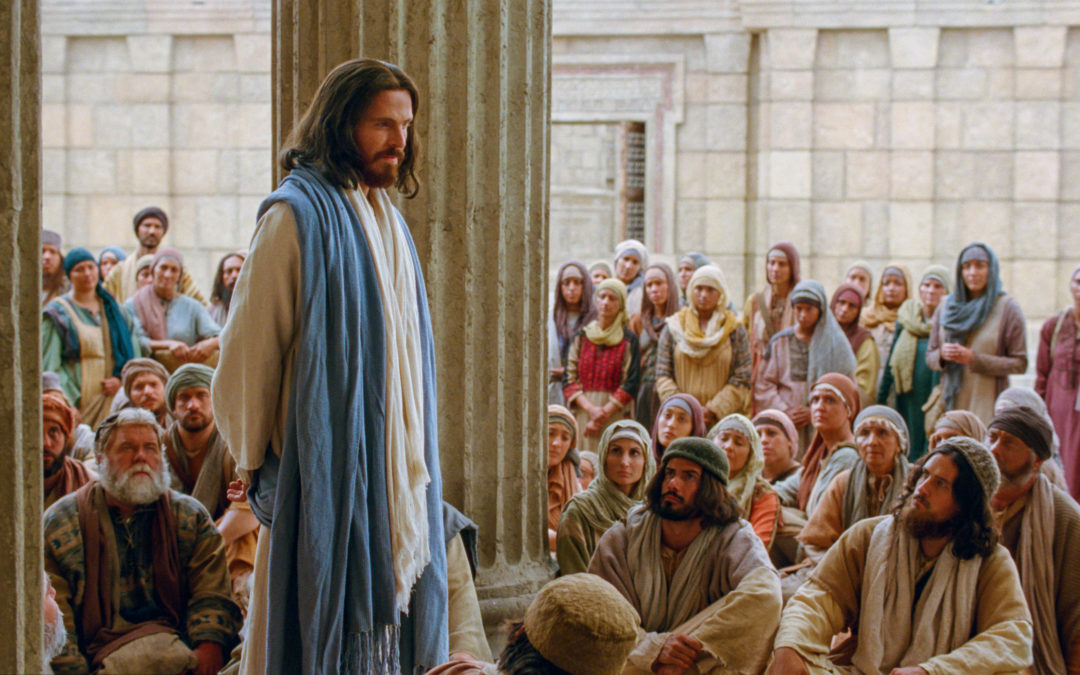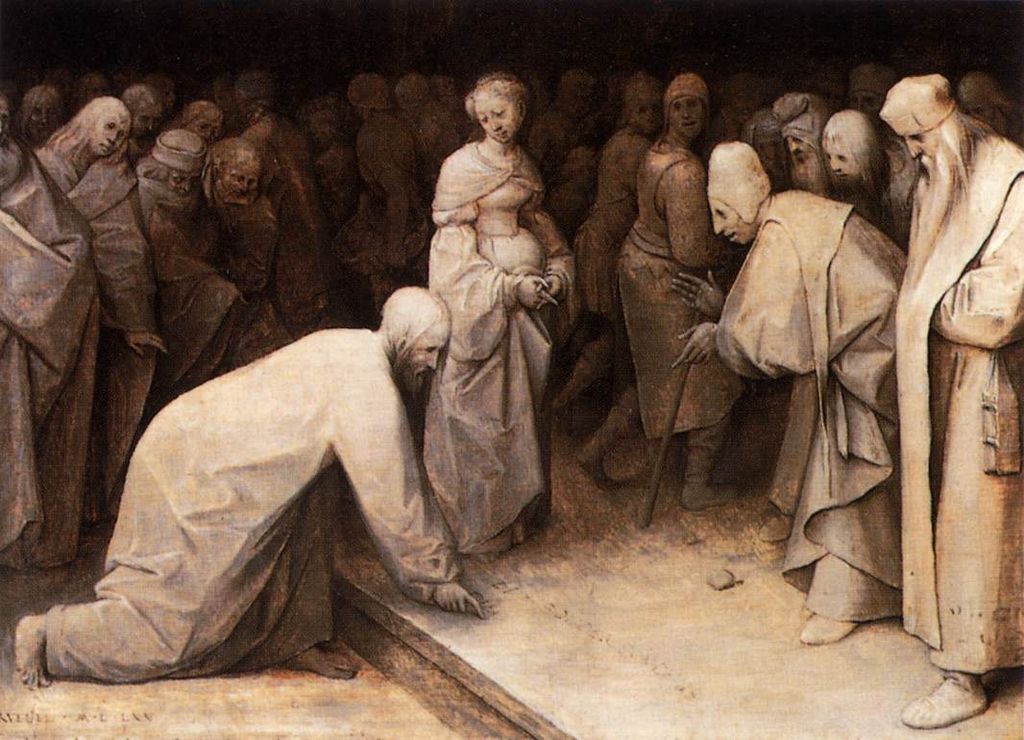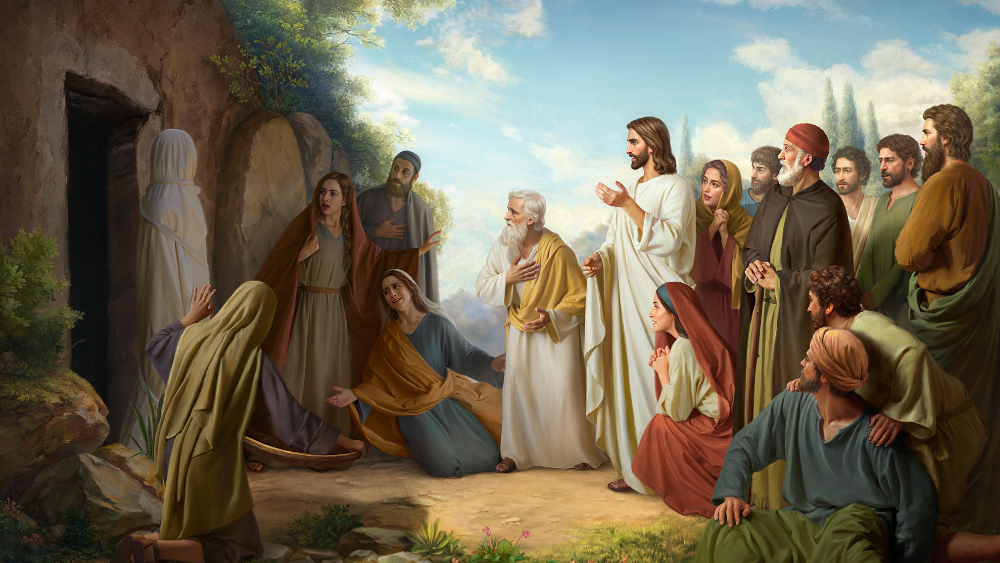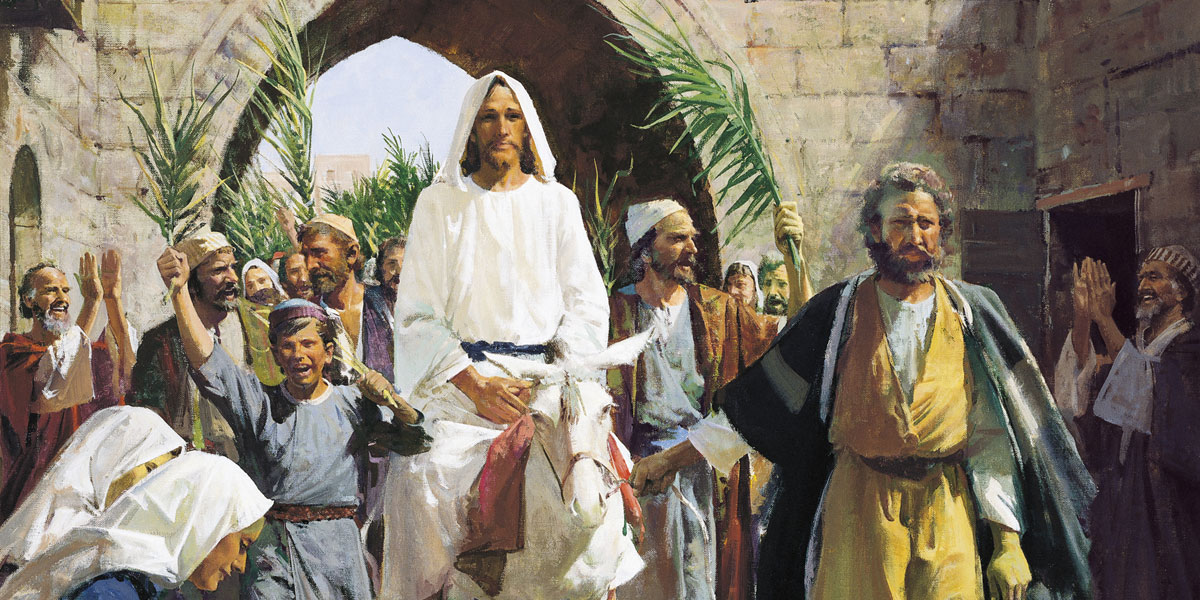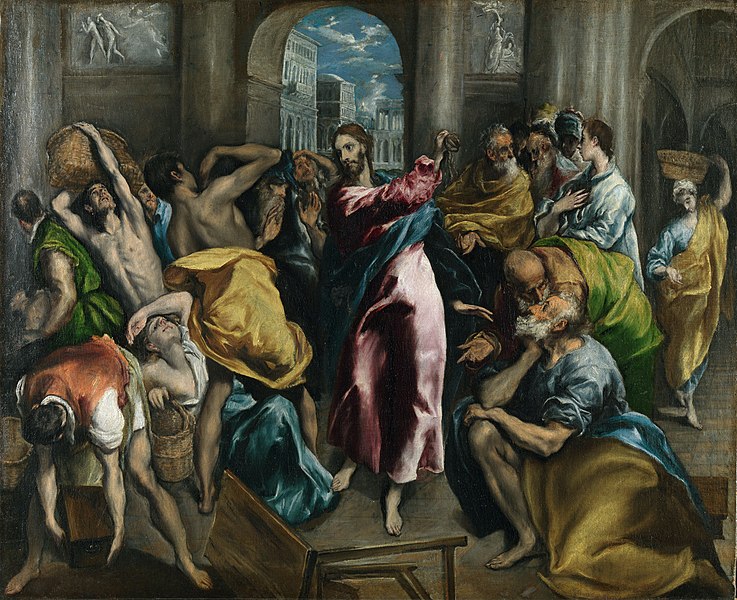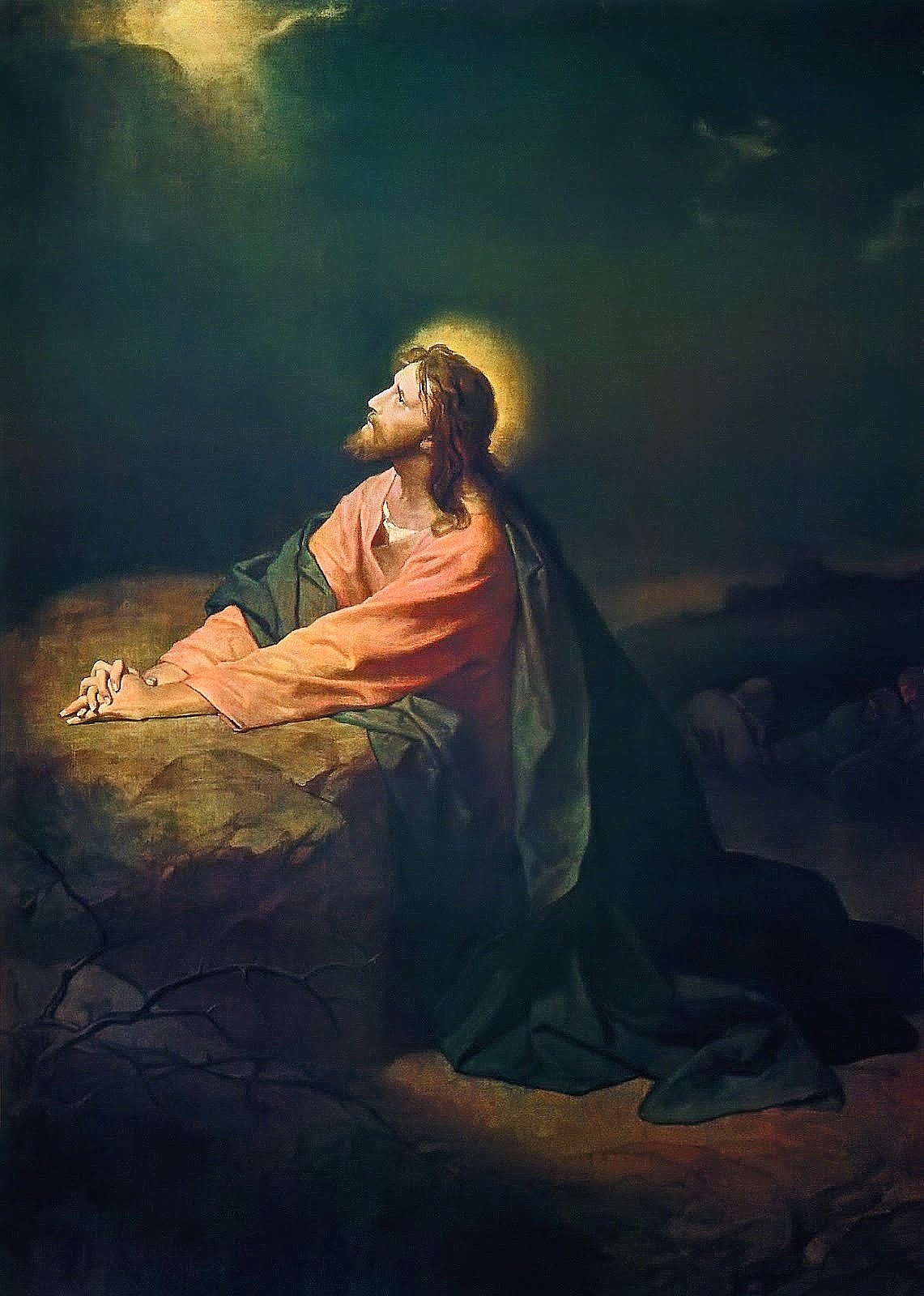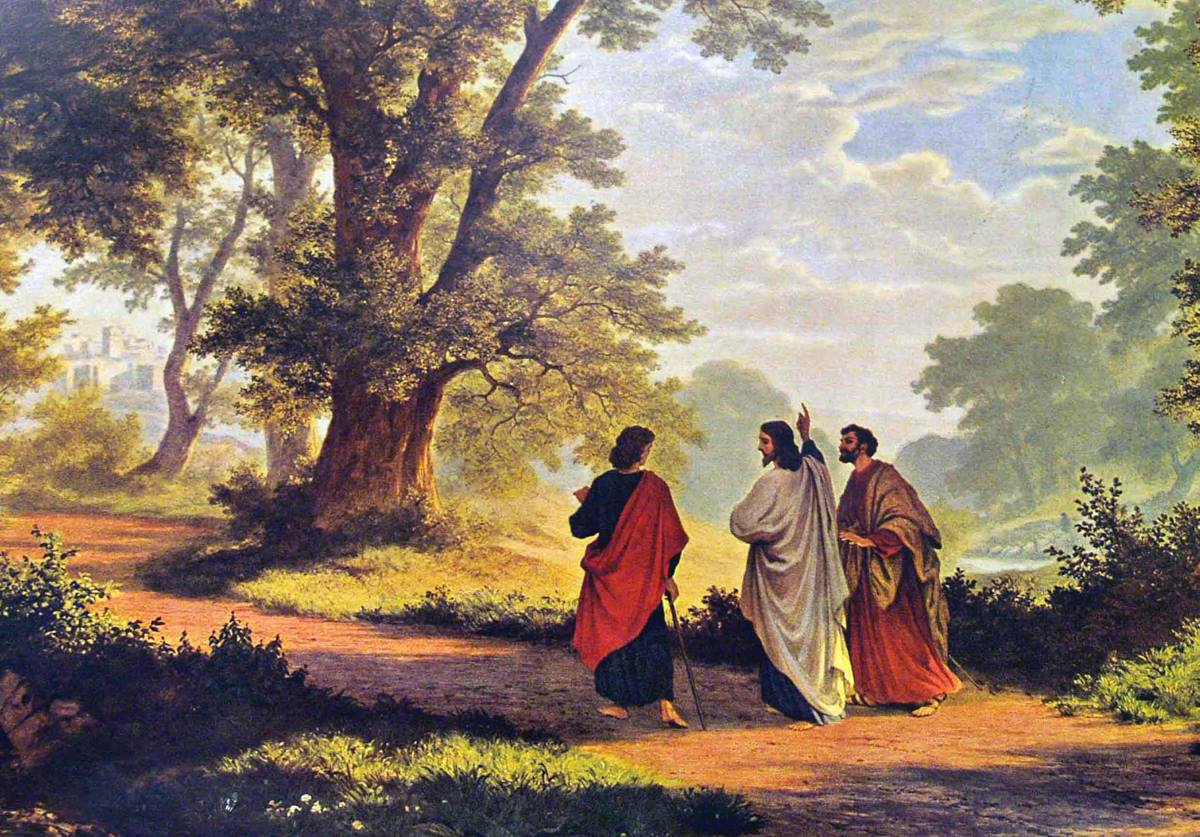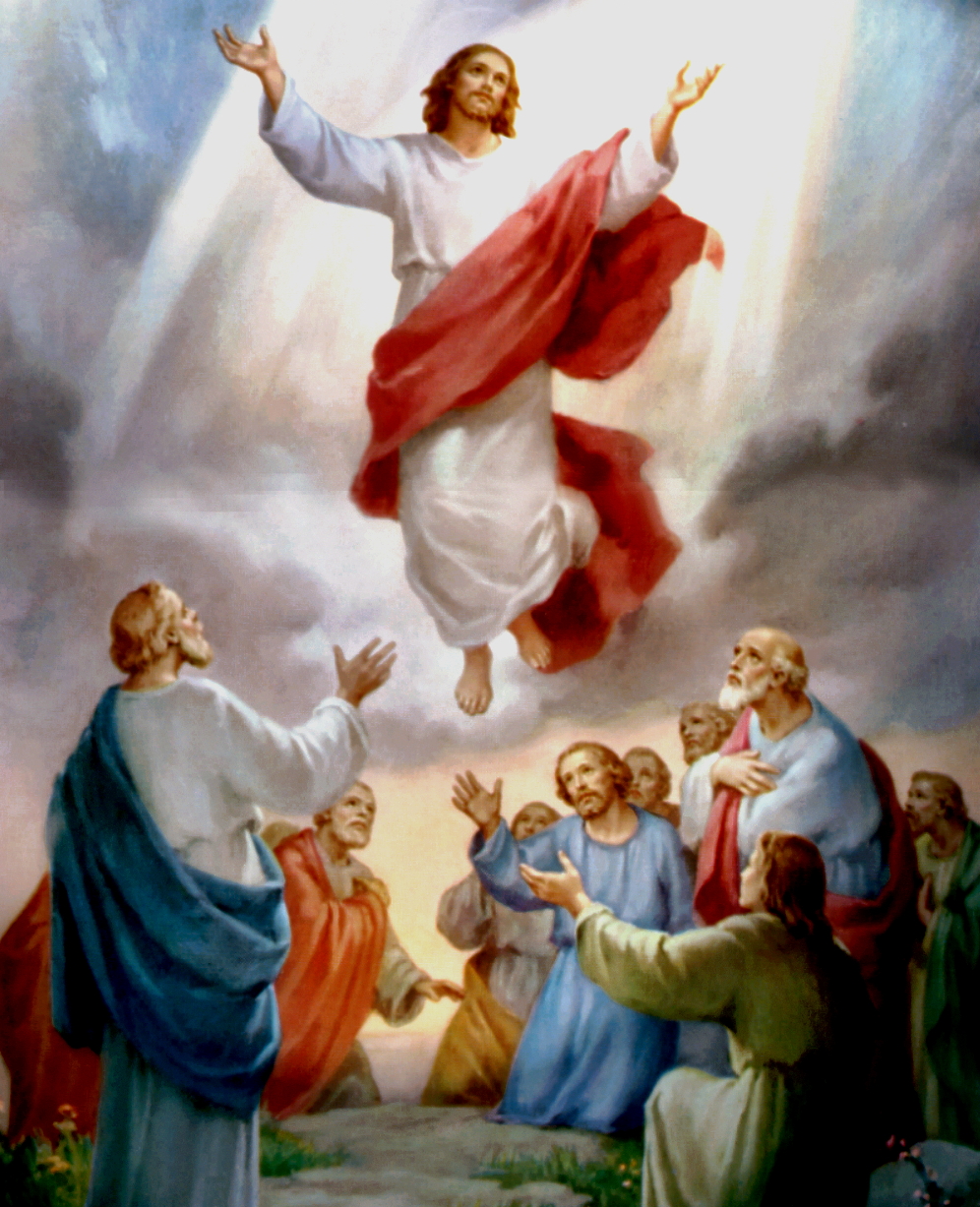4. THE FORMATION OF CHRISTENDOM

JESUS: THE ANOINTED ONE ("MESSIAH"
OR "CHRIST")

JESUS: THE ANOINTED ONE ("MESSIAH"
OR "CHRIST")
 Jesus and Christianity – not exactly the
Jesus and Christianity – not exactly thesame thing
The textual material on this webpage is drawn directly from my work
A Moral History of Western Society © 2024, Volume One, pages 128-132.
JESUS AND CHRISTIANITY – NOT EXACTLY THE SAME THING |
JESUS'S EARLY LIFE |
|
Jesus's birth
When was Jesus born? A medieval monk five centuries after Christ sat down and counted the years back from his time to the time he felt that Jesus had to have been born – and that then became to him and to the Christian world since then, "Year One." But more recent scholarship has shown that he miscalculated a bit, for Herod died several years before this Year One – and if Jesus had been born before Herod died (as Matthew tells us) then Jesus might have been born 4 or 5 years prior to Year One. Close enough! In the four Christian gospels – Matthew, Mark, Luke, and John – that open the Christian "New Testament" of the Bible, we have a very comprehensive reporting on Jesus and his ministry. However, two of those gospels, Mark and John - the earliest, Mark, and then the latest, John, of the four in terms of when they were written – jump straight to the beginning of Jesus' ministry as an approximately 30-year-old, skipping the part relating to his birth and early development. For that, we have to rely on Matthew and Luke. Their narratives on this matter vary somewhat … due to the purpose behind their composition in the first place. Matthew, focused on answering the Jewish question about the Christian claim that Jesus was indeed the Jewish long-awaited Messiah, starts with a long genealogy, tracing Jesus's roots back to the Davidic Kingship … then brings the narrative up to the times of Herod, Jesus's birth in Bethlehem, the visit to the baby Jesus of the Wise Men from the East (Zoroastrians, most likely), the jealousy of Herod in hearing of this visit to the newly born future Jewish "king" … and the angelic-inspired escape of Jesus's parents, Mary and Joseph, to Egypt to avoid the slaughter Herod enacted upon the male babies of Bethlehem in his effort to kill off any such potential "king." Eventually Mary, Joseph and Jesus return to Judea … but to Galilean Nazareth, where Jesus grows up as presumably a carpenter alongside his father. Luke seems to be addressing more of a Greco-Roman audience … and starts the story off with the miraculous conception by the unmarried and thus virgin Mary of a child, fathered not by man but by the Spirit of God. Graciously, her fiancé Joseph accepts Mary's strange pregnancy and marries her. But while still pregnant, a decree by Caesar Augustus goes out to have all citizens of the Empire report to their ancestral birthplaces to be counted (a tax-focused census). This brings Joseph and the pregnant Mary to Bethlehem, where Jesus is born … and visited by shepherds made aware of the birth by a heavenly host of angels (the eventual visit of the Wise Men is not mentioned in Luke). When the baby Jesus was then brought to Jerusalem for dedication, Jesus is confirmed by the "righteous and devout" Simeon and the prophetess Anna to be the long-awaited Messiah or Christ (Anointed One). Luke then adds the story of a later visit to Jerusalem by Joseph and Mary and their 12-year-old son, Jesus … who departs company from his parents to find himself in amazing discourse with Jerusalem's rabbis… or as Jesus put things, to be in his "Father's (God's) house." |
Mary was a very young woman engaged to be married to Joseph, a carpenter in Nazareth ... when an angel appeared to her and announced her forthcoming pregnancy - to a very startled Mary ... who was not yet married. (Luke 1:26-33)
Meanwhile Joseph, who, at the news of Mary's pregnancy, had planned to quietly end the engagement, was instead informned by an angel in a dream to go ahead with the marriage ... because the baby she bore was conceived by no man but by the Holy Spirit. And he did as he was instructed to do. (Matthew 1:18-24)
In that same conversation the very startled Mary had with the angel, she too was informed that the pregnancy would be an act of God himself ... so that she might give birth to the much awaited "Son of God. To confirm such an unbelievable miracle, she was directed to note that her aged cousin, Elizabeth, had conceived a son by her husband, Zechariah, a high priest ... at time in which she was assumed to be barren. "For nothing is impossible with God."
| Mary hurried to Judea to
see this miracle of Elizabeth's (already 6 months along in her
pregnancy). When Mary arrived ... as her own baby leaped in
her own womb at Mary's greeting ... and Elizabeth was filled with the
Holy Spirit. And instead of shame at the unwed pregnancy, worship
of God and his graciousness became the motif of their meeting.
Mary would subsequently remain with Elizabeth for three months.
When Elizabeth's baby was born Elizabeth named her child John ...
at which point her husband Zechariah suddenly found himself delivered
from his inability to speak (ongoing since the announcement of
Elizabeth's own pregnancy). Everyone was astounded at the
miraculous recovery ... and Zechariah began to prophesy about his child
... who would one day become a great prophet (the future John the
Baptist, in fact). Luke 1:39-80
|
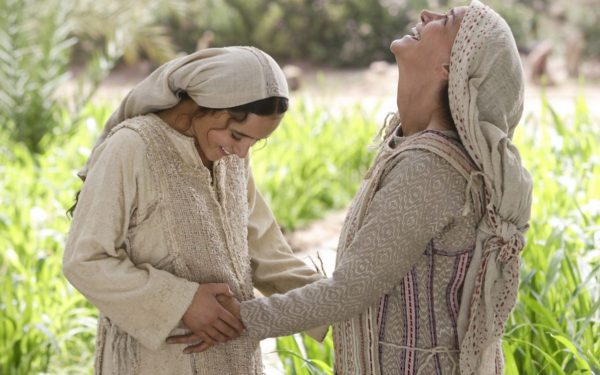
| Around that time, Roman Emperor Octavian Augustus Caesar orders that a census be taken of the entire Empire. Luke2:1-3
|
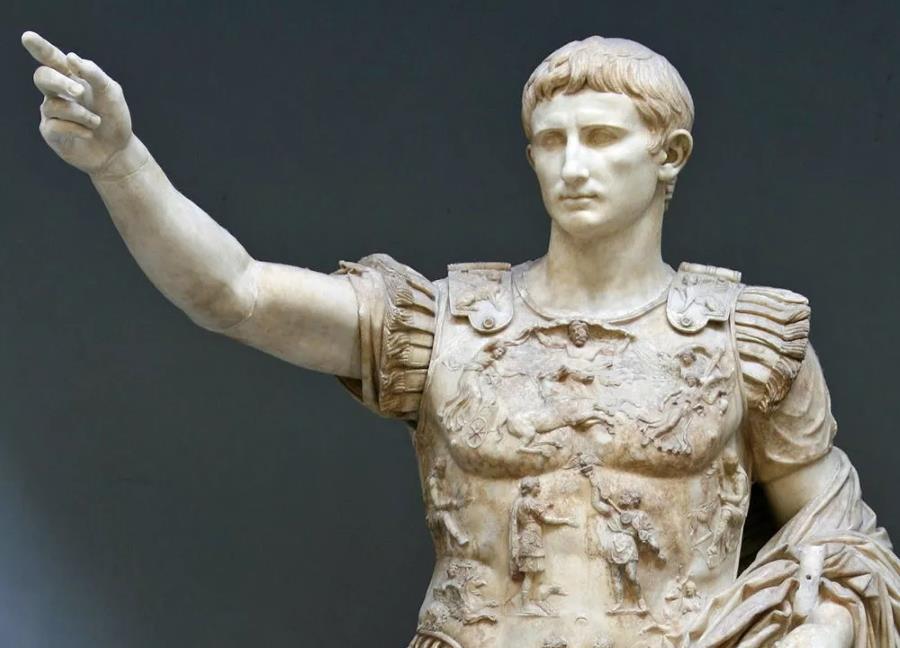
| ... forcing Joseph and his very pregnant wife Mary to leave their home in Nazareth and journey to Bethlehem ... their legal homeland by origin. Luke 2:5
|
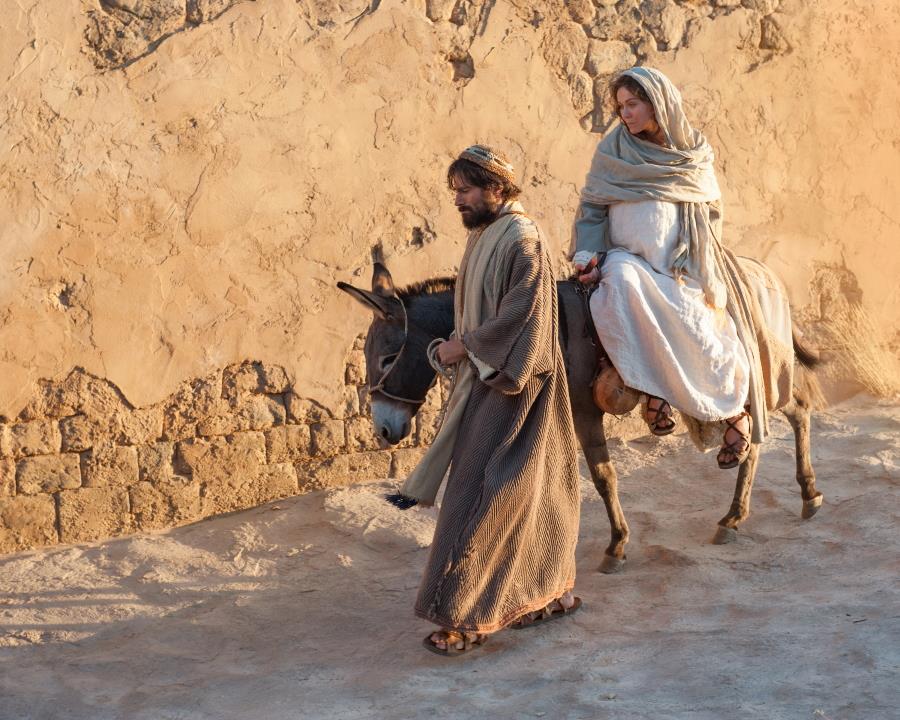
| But
with all the commotion caused by Caesar's decree, they arrive in
Bethlehem only to be told that there was no room at the inn. But ... they could bed down in the stable (a cave actually). Luke 2:7
And there Mary gave birth to the baby they named Jesus (Yeshua "He saves") Matthew 1:25
|
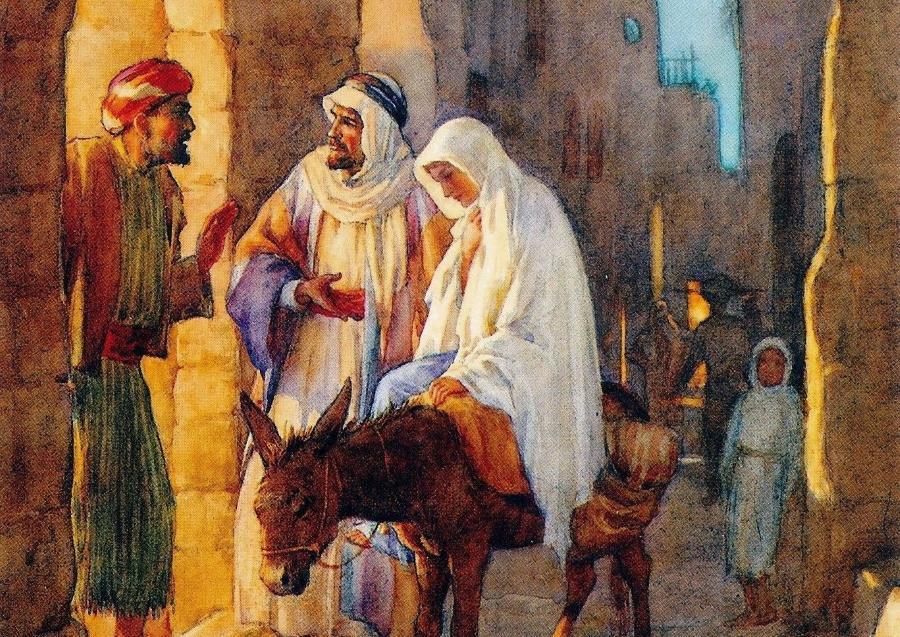
| At the same time, shepherds out in the fields watching their flock were shocked to be told by angels about the birth. Luke 2:8-14
|
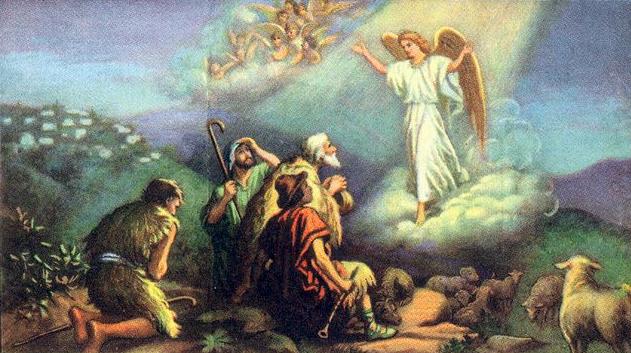
| ... and understood that they were to visit Bethlehem to see this miracle. Luke 2:15-20
|
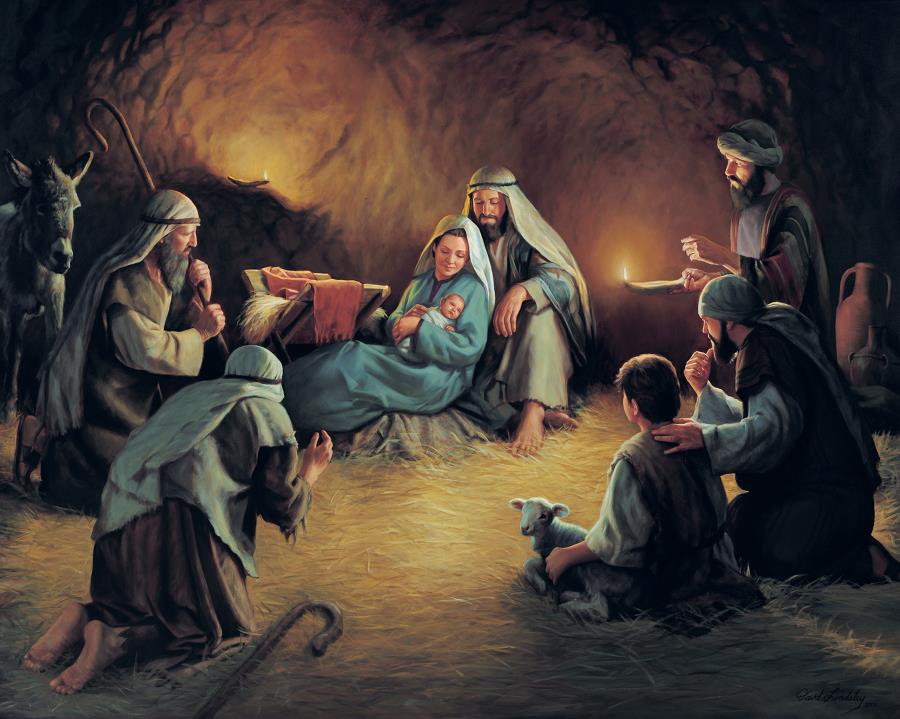
|
Then when the baby was just eight days old, Joseph and Mary took him to
Jerusalem to circumcize him and to present him to the Lord. At the
temple they encountered Simeon, who had received word from the Holy
Spirit that he would not die before seeing the Lord's Christ (Anointed
One). When he saw Jesus, he knew that the promise was being
fulfilled. At the same time the prophetess Anna came to them ...
speaking also about Jesus as being the one whom all were expecting to
redeem Jerusalem. Luke 2:21-39
|
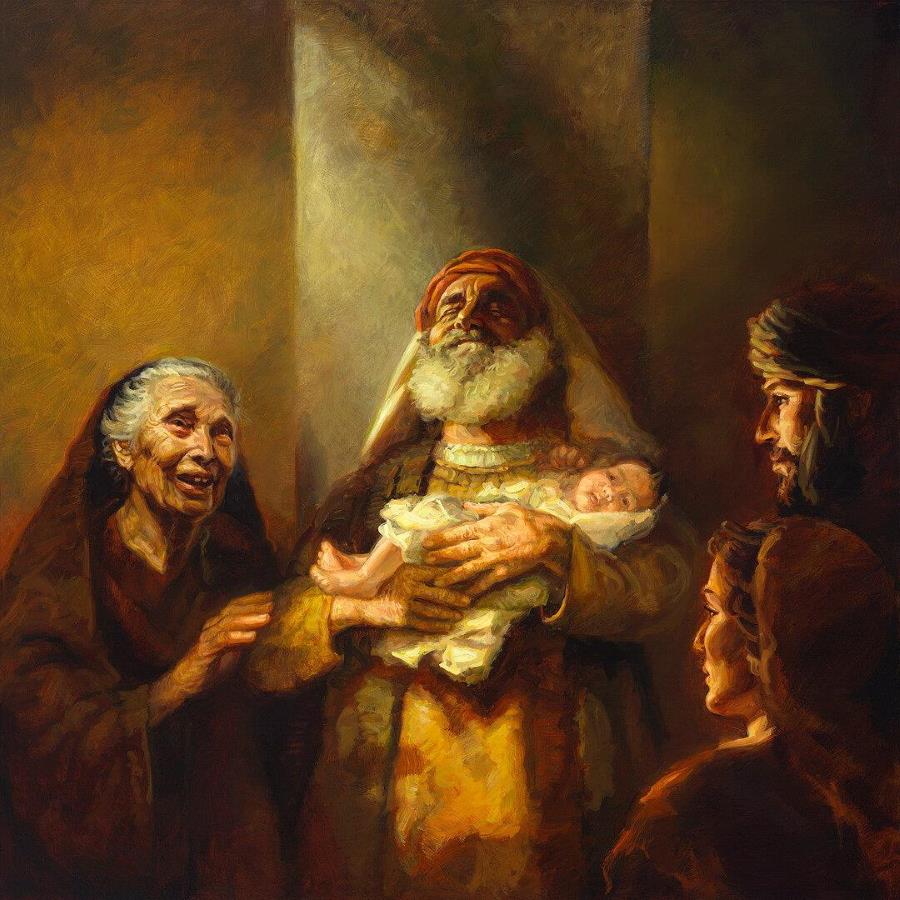
| Then
at some point in the child's early development, wise men (most likely
Zoroastrian priests) saw a brilliant star that indicated that a king
had been born in Judea ... and came there from the East to worship
him. In
their asking around for information about such an event in Jerusalem,
word got back to king Herod about the wise men and their search for
this new king ... disturbing Herod greatly. When Herod inquired
of the Jewish priests what they knew of such an event, they told him
that long ago just such a king had been prophesied ... to be born in
Bethlehem. So Herod called the visiting wise men, asked them to
go
find the child, and then report back to him ... so that he also could
worship the new king. Indeed, the wise men did find the Christ child ... and worshiped him with gold, incense and myrrh. Matthew 2:1-11
|
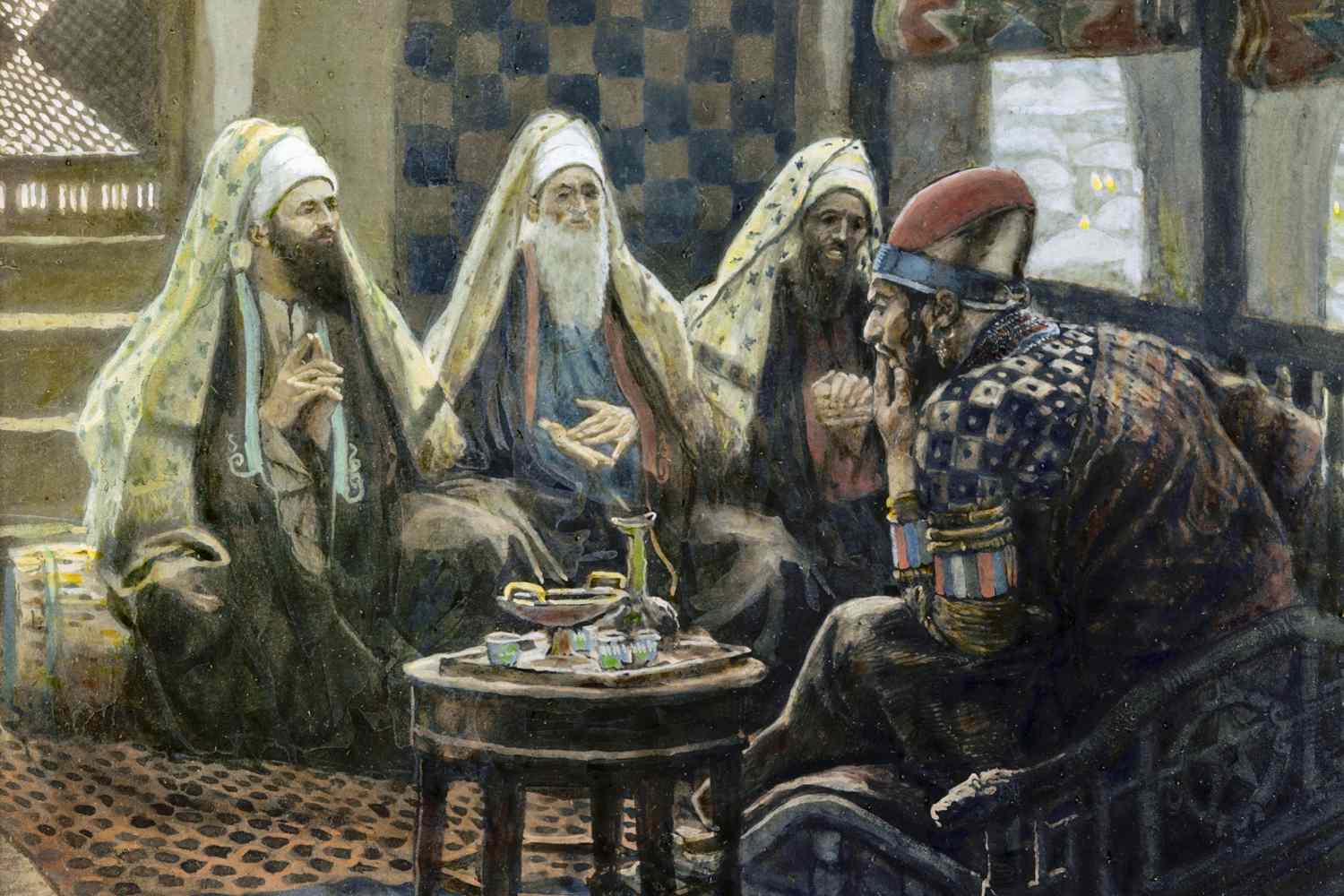
| But
they were warned in a dream not to return to Herod ... but to return
home by a different route. Also an angel appeared to Joseph and
told him to take Mary and
Jesus and escape to Egypt ... because Herod intended to kill their
child. They were to remain there until Herod should
die. Matthew 2:12-15
|
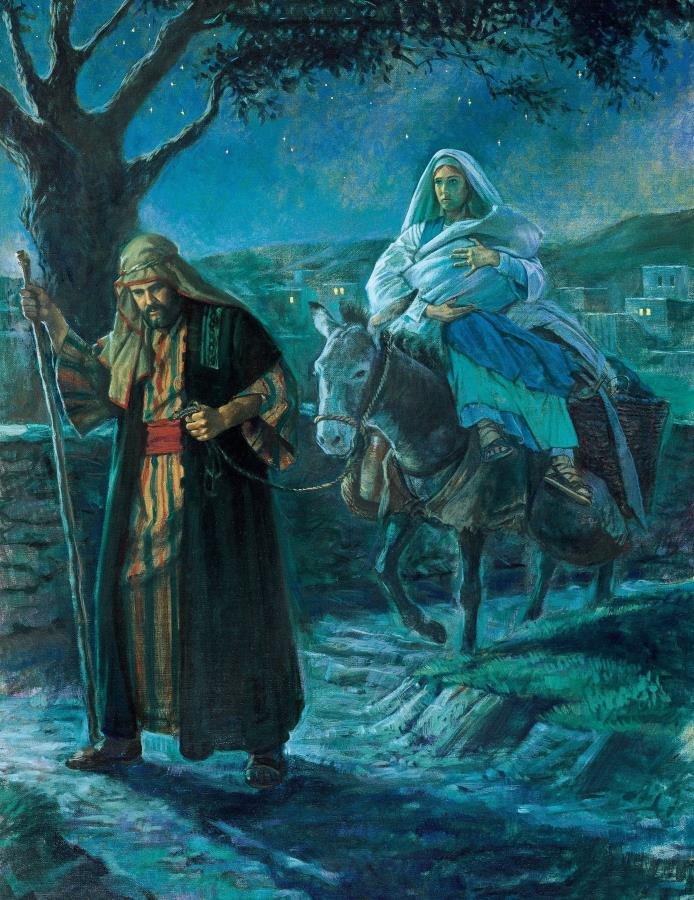
| When
Herod realized he had been tricked by the wise men, he was furious ...
and ordered the slaughter of all boys in Bethlehem aged two and
under. Matthew 2:16-17
|
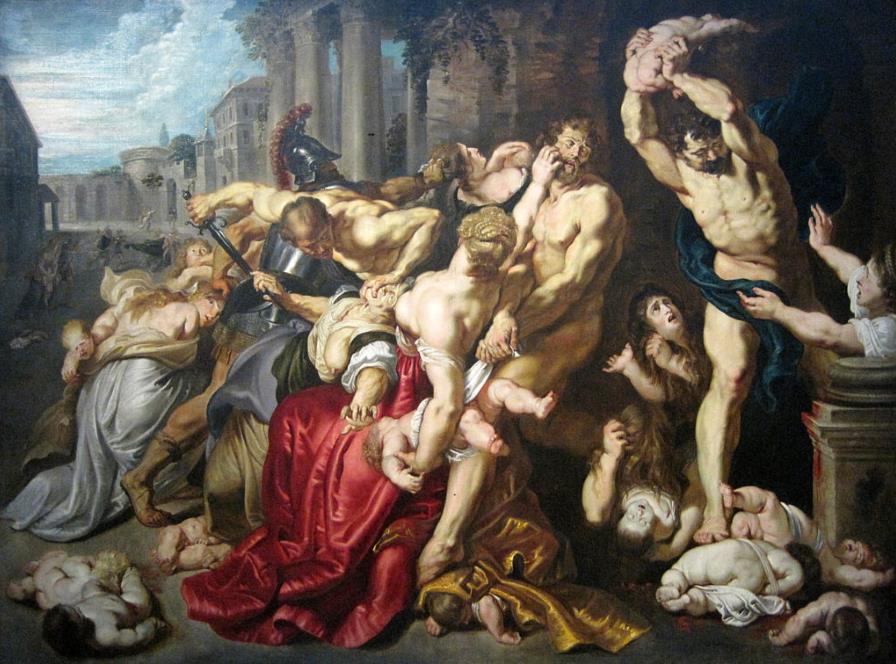
| After
Herod had died [sometime between 4 and 1 BC], an angel informed them
that they were to return home to Israel ... taking residence in
Nazareth. Matthew 2:19-23
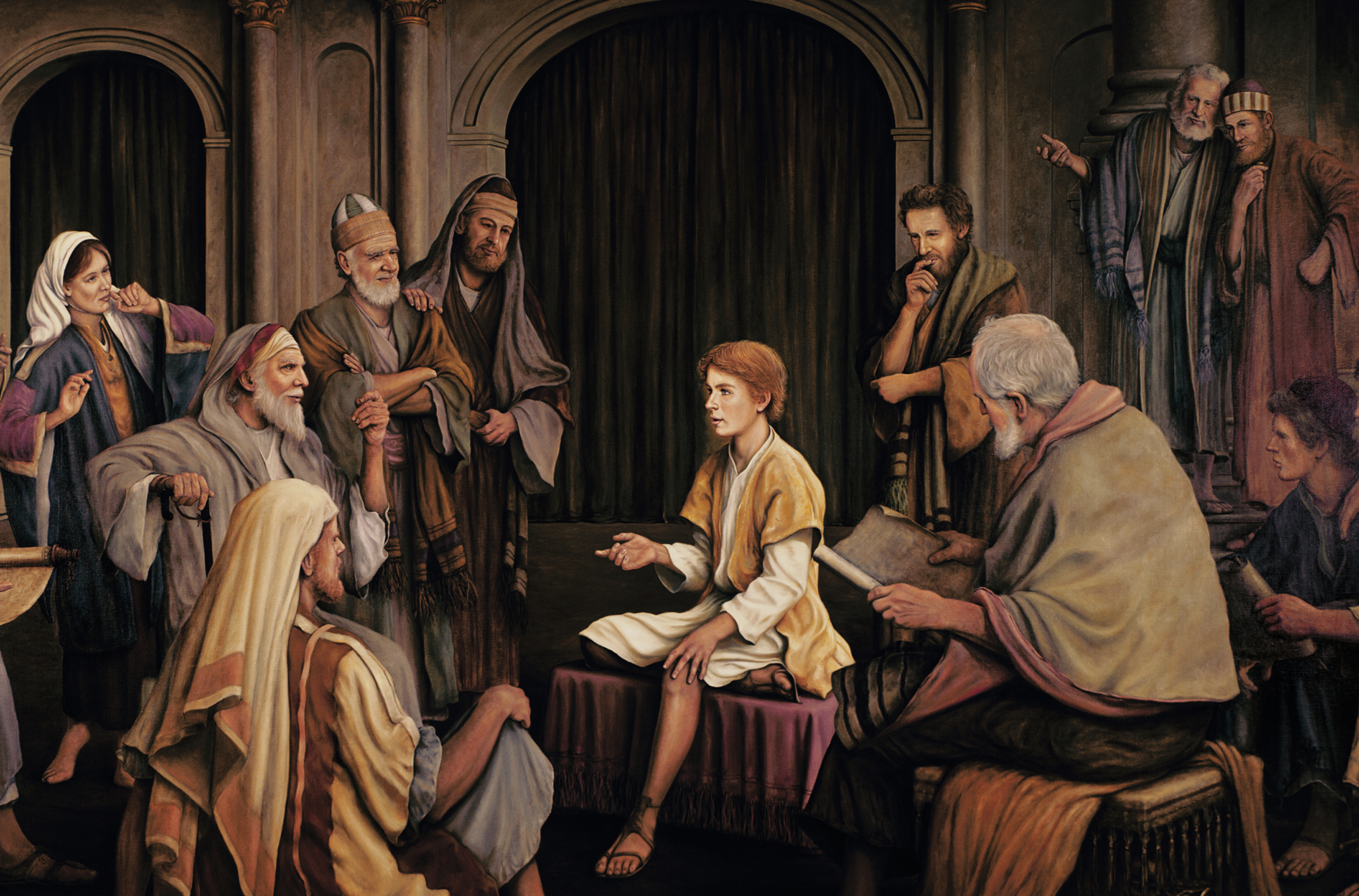 Young Jesus in a discussion with the elders at the Temple
| ||||||||||||||
|
Jesus's early ministry From Matthew, Mark and Luke – writers of the "Synoptic" Gospels … meaning, seen through the same eyes or perspective – we get a picture of Jesus's ministry that seems to follow a fairly closely scripted scenario: Jesus's ministry lasted only a single year, in and around Galilee – and his journey to Jerusalem was the closing of that ministry. However from John, we get the idea that Jesus's ministry lasted over two and possibly as many as three years – on the basis of his many trips to Jerusalem to be present at the important Jewish festivals. All four gospels point to the start of Jesus's ministry at a time when the appearance of the Messiah was strongly expected. John the Baptist was preaching a baptism-based repentance at the time … with many wondering if John might be the Messiah. But John affirmed that he was not – but announced that the Messiah was coming. Then when Jesus came to be baptized by John, John found the opportunity to testify that it was indeed Jesus who filled that Messianic role … as the Lamb of God who takes away the sins of the world. This was confirmed by John then seeing the Holy Spirit descend upon Jesus "like a dove." Thus God the Father, Jesus the Son, and the Holy Spirit completed the "Trinitarian" power in that all-important baptismal moment. Matthew, Mark and Luke mention – as the follow-up to Jesus's baptism – Satan's wilderness testing of Jesus ... to see if Jesus could be seduced into following the agenda of the quite unspiritual world around him. Despite his "forty days" of fasting, Jesus stood firm in his commitment to follow only the instructions of scripture: to worship and serve God alone, not human ambition. In his follow up to this episode, Luke tells of Jesus's early ministry to an amazed public ... but also a conflict in Nazareth over serving God versus serving the religious expectations of his own hometown folks – just to drive this point home. Jesus then began to assemble a special group of followers, the twelve disciples … men of quite ordinary social status – a number of them simply fishermen. None of these were Biblical scholars or persons of high religious standing ... because Jesus's ministry was not about high theology, but was about the spiritual salvation of the people – the rich and the poor alike. Jesus's miracles
At this point begin the numerous miraculous healings and other miraculous events … such as the changing of vats of water into wine, the stilling of the storm, the feeding of the 5,000, even the raising of the dead. These were designed not only to demonstrate that Jesus indeed had the power of God with him … but also to make even clearer and stronger the messages or teachings that Jesus understood himself called to deliver. Indeed, the gospel of Mark is a running account of a huge number of miracles … and the gospel of John uses a select number of miracles to illustrate the various aspects of Jesus's teachings. Jesus's teachings
Actually, Jesus taught as much by example as he did by words or speeches … especially since the heart of his message, his Good News or gospel, was that it was faith in God, not the works of our hands – no matter how "good" those might be – that God wanted to see coming from us. And faith is more than just excellent ideas brought forward in great oral discourses. It is instilled or inspired by personal example in the face of life's many challenges. Thus Jesus's miracles as the demonstration of the power of authentic faith were key elements of his teachings. And these miracles were truly amazing ... giving cripples the power to walk again, healing lepers, giving sight to the blind ... and even bringing the well-dead back to life. His disciples were also amazed to see him walk on water to come to their boat ... and he could stop storms with a simple command. Jesus was not a show off. He was only illustrating what could be achieved simply by full faith in the Heavenly Father. And that faith was directed to a loving God, a Father in heaven – whom Jesus called "Abba" … a child's name for its "Daddy." Of course such personal familiarity with the mighty Yahweh of Heaven was considered highly scandalous by proper, or orthodox Jews. In fact, pretty much everything Jesus did was scandalous to the Pharisees and their orthodox followers … for it was clear to Jesus that the Law that the Pharisees tried religiously to live by was simply summed up for Jesus as the Law of Love … love of God and the love we have for each other. Religious ritual seemed to be of little importance to Jesus. And that Law of Love even carried to the point of forgiving the unforgivable … because if unforgiveness was the law of life, then God himself would find good cause to destroy all of us. None of us are perfect. Thus, when the religious Jews tried to set a moral trap for Jesus … by bringing before him a woman caught in adultery – to test Jesus to see if his "forgiveness" would lead him to break the Law of Moses on such a taboo matter – Jesus turned the tables against them by inviting the person who was without sin to cast the first stone in their punishment of the woman. The wise ones dropped their stones and quietly retreated … soon followed by the others. They all knew that they too, at some point were sinners. 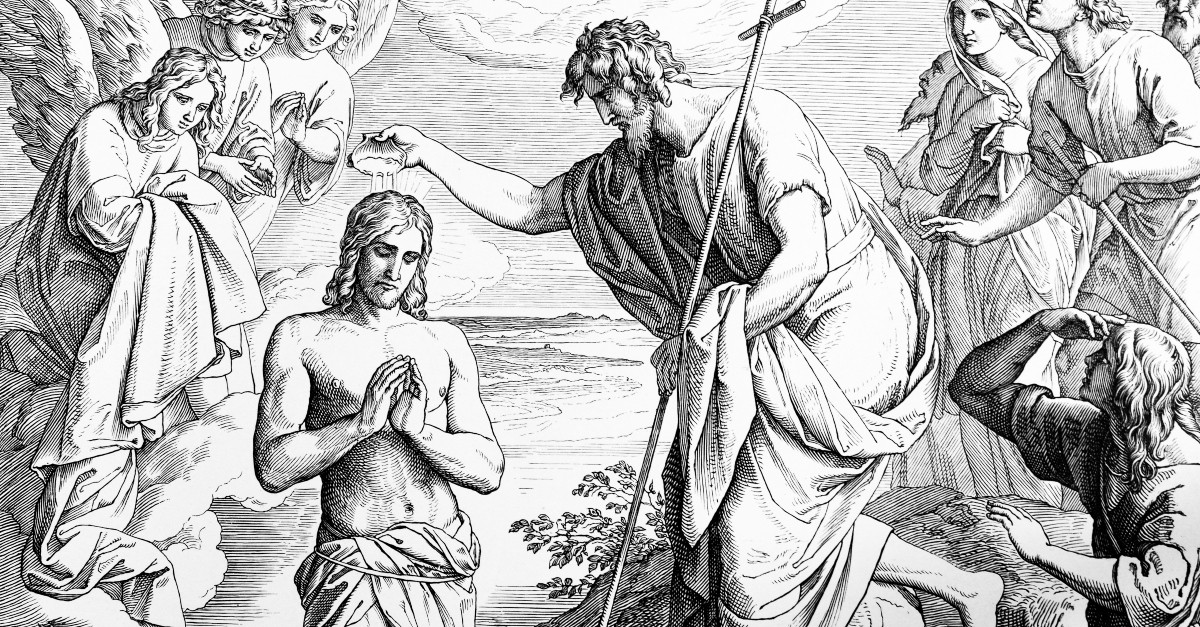 Jesus is baptized in the Jordan River by John the Baptist ... beginning Jesus's ministry 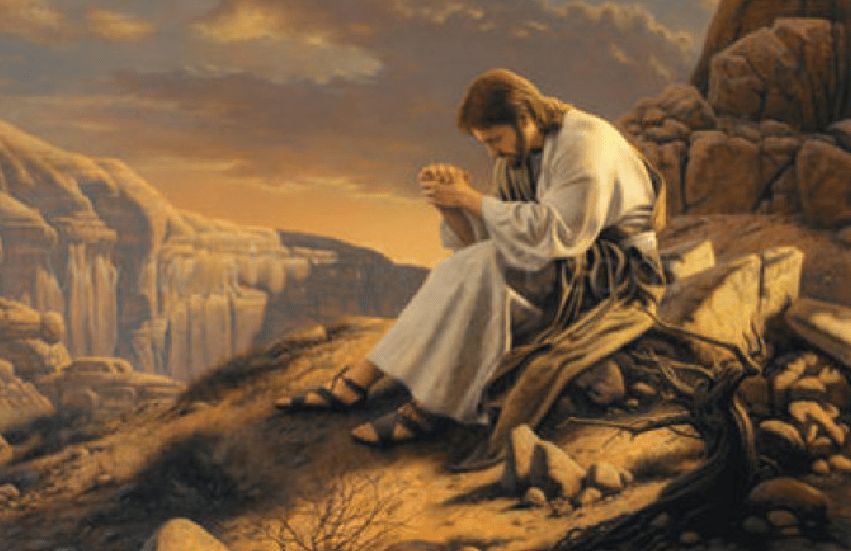 Jesus is sent by the Holy Spirit into the Wilderness to fast ... and be tested by Satan Matthew 4:1-11 / Luke 4:1-13 (briefly mentioned in Mark 1:12-13) 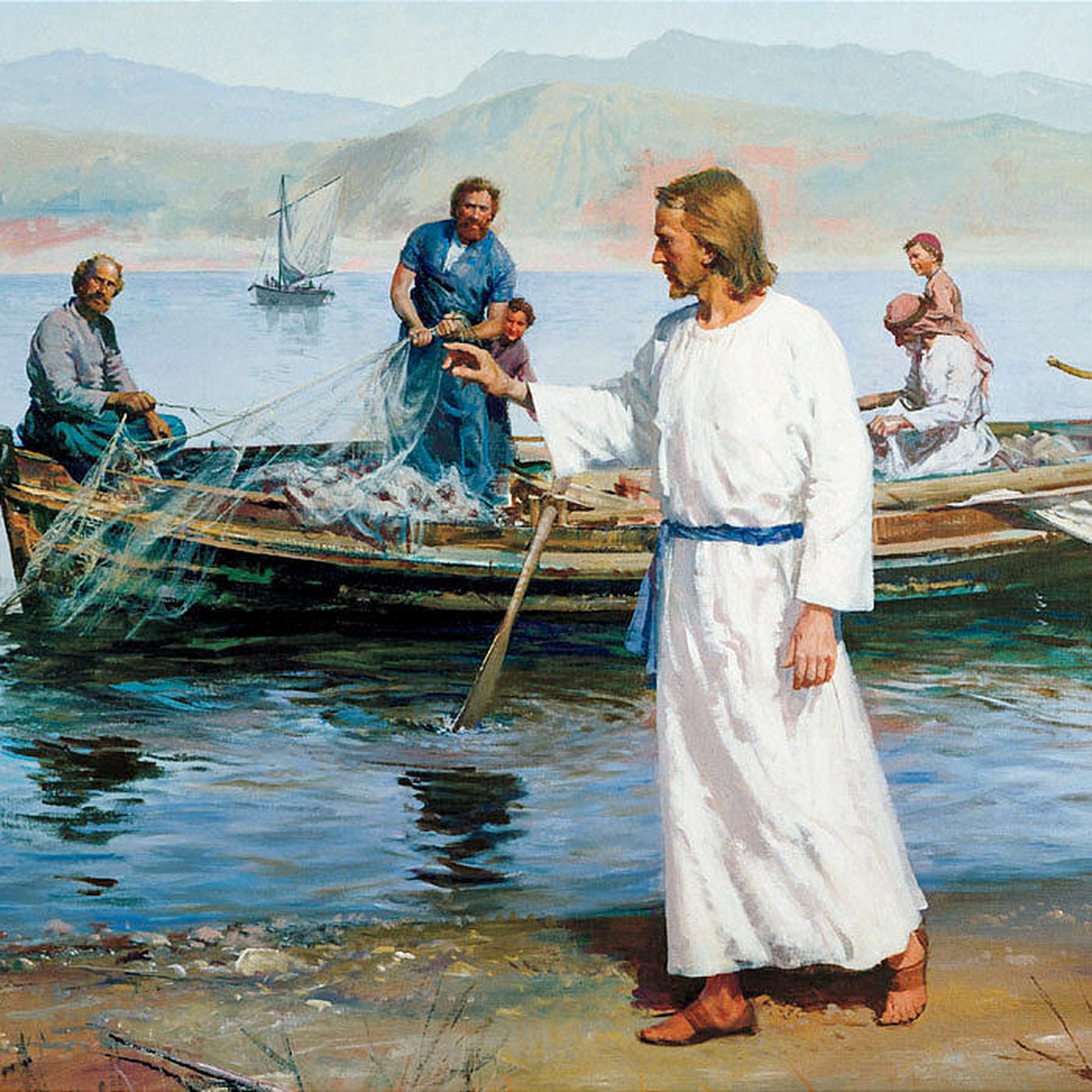 Jesus calling his disciples ... here telling the wearied Peter to head back out and cast his nets again Luke 5:1-11 / Matthew 4:18-22 / Mark 3:16-20 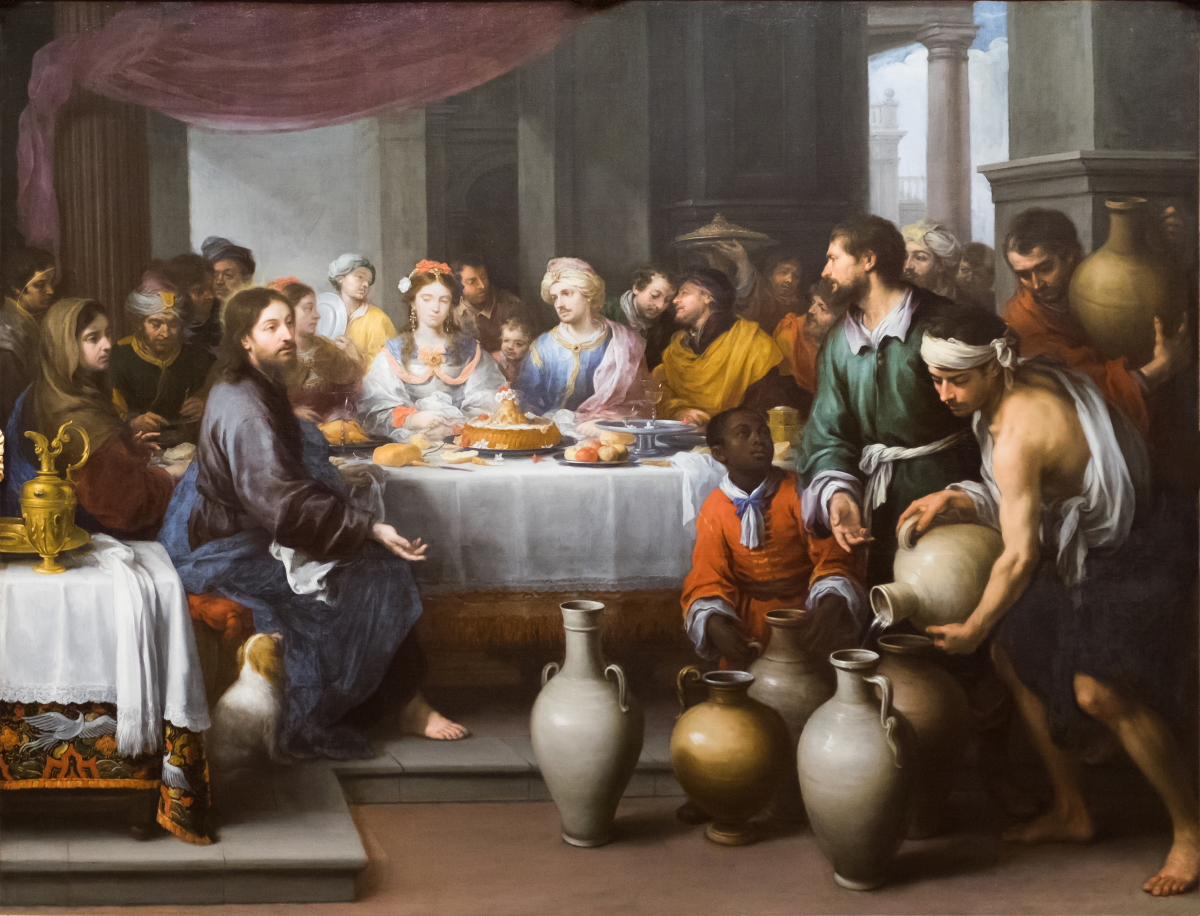 Jesus changes water to wine at the wedding feast in Cana John 2:1-11 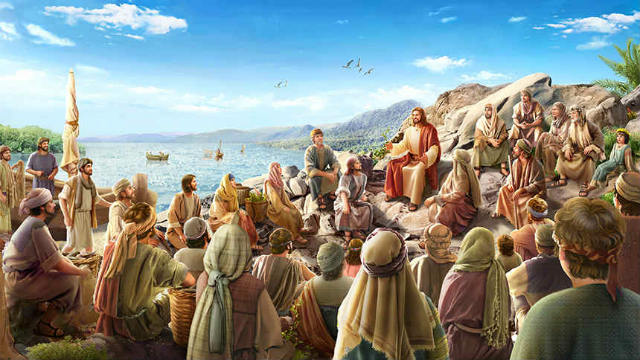 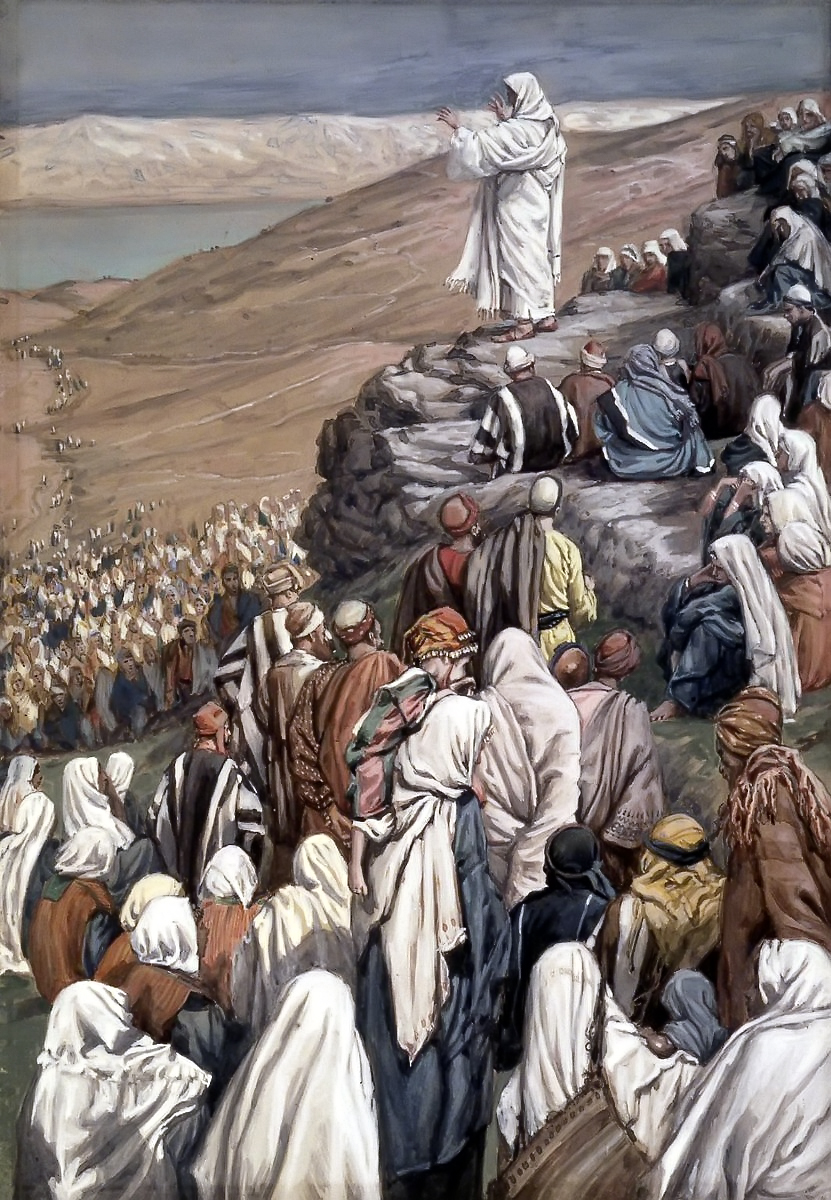 Matthew 5:1-7:29 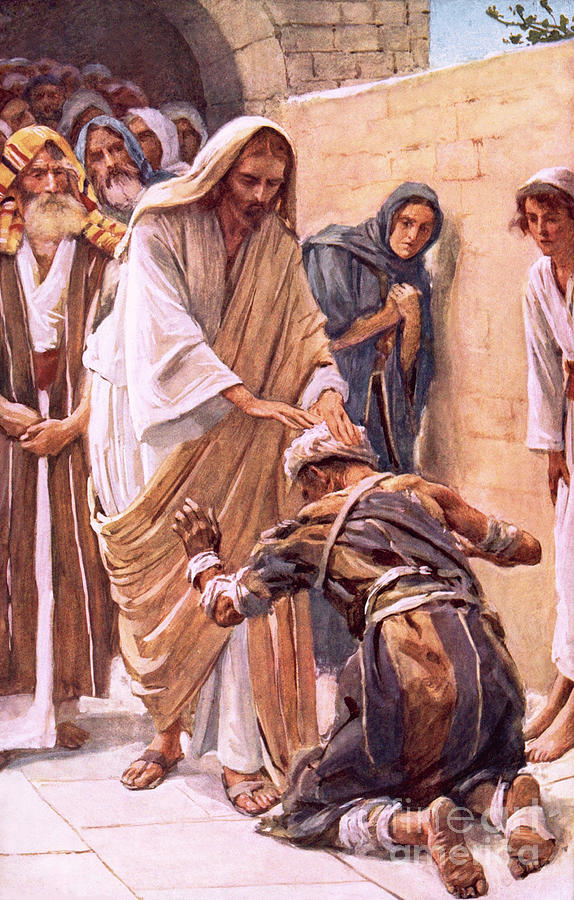 Jesus heals the leper Matthew 8:2-4 / Mark 1:40-45 / Luke 5:12-16 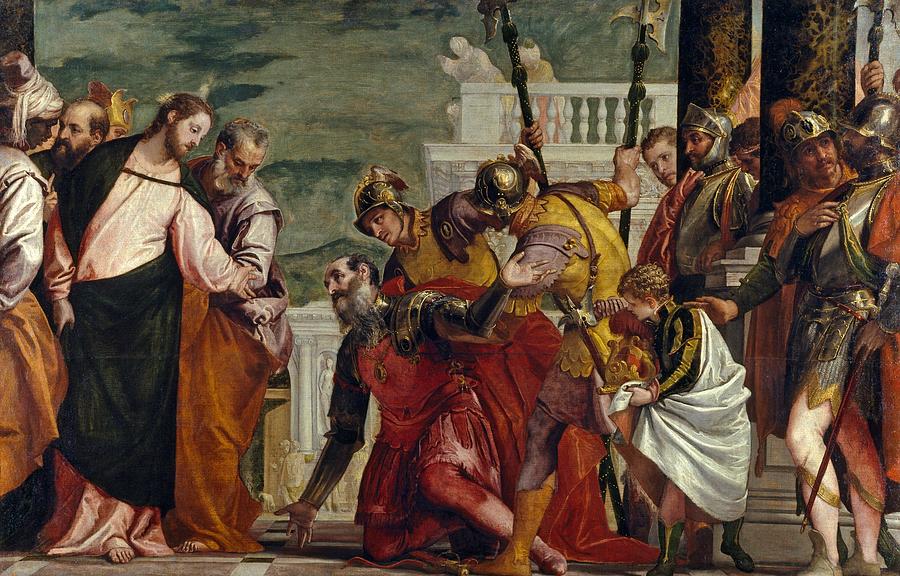 Purely by the centurion's faith in Jesus, the centurion's servant is healed

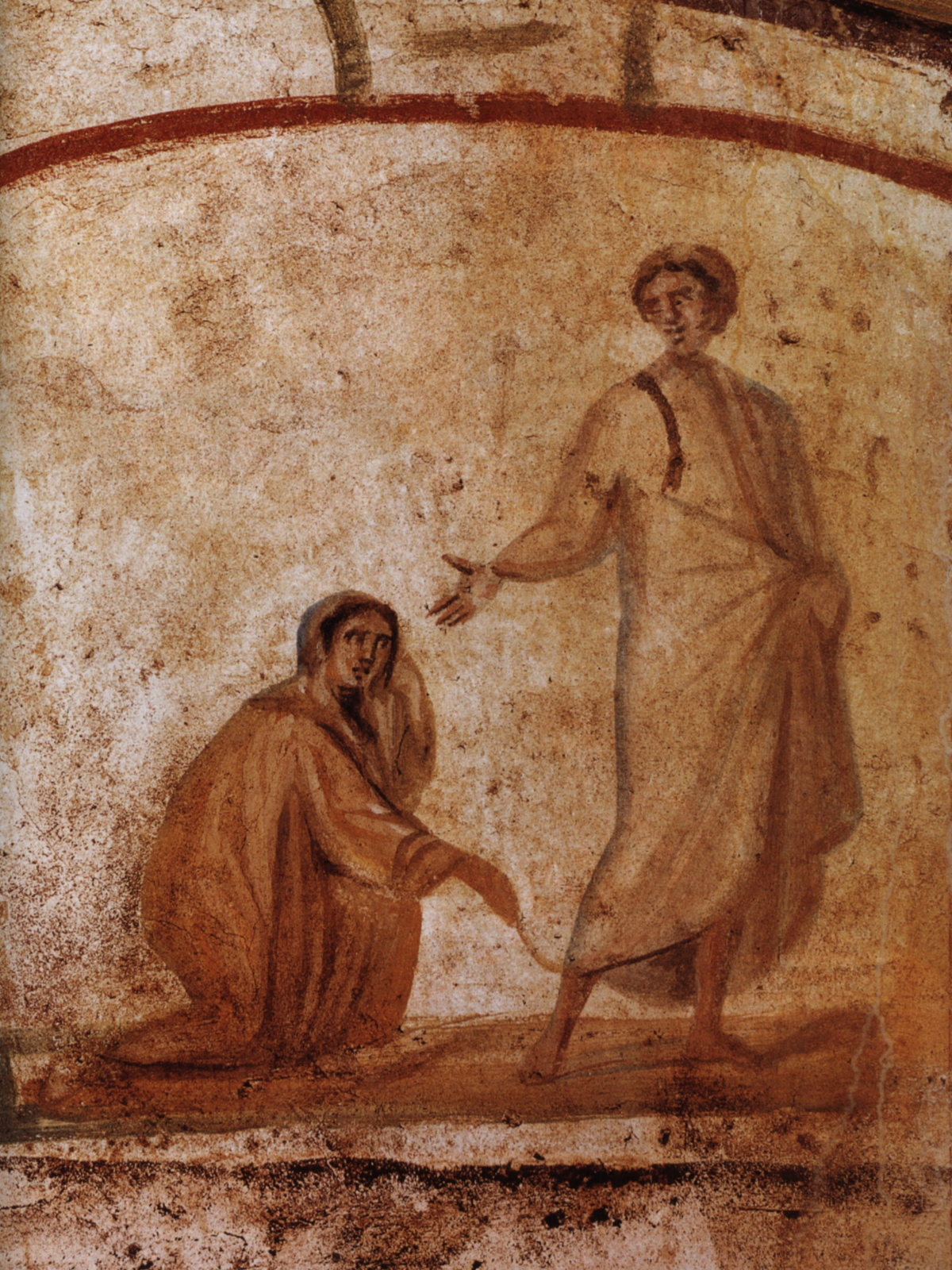
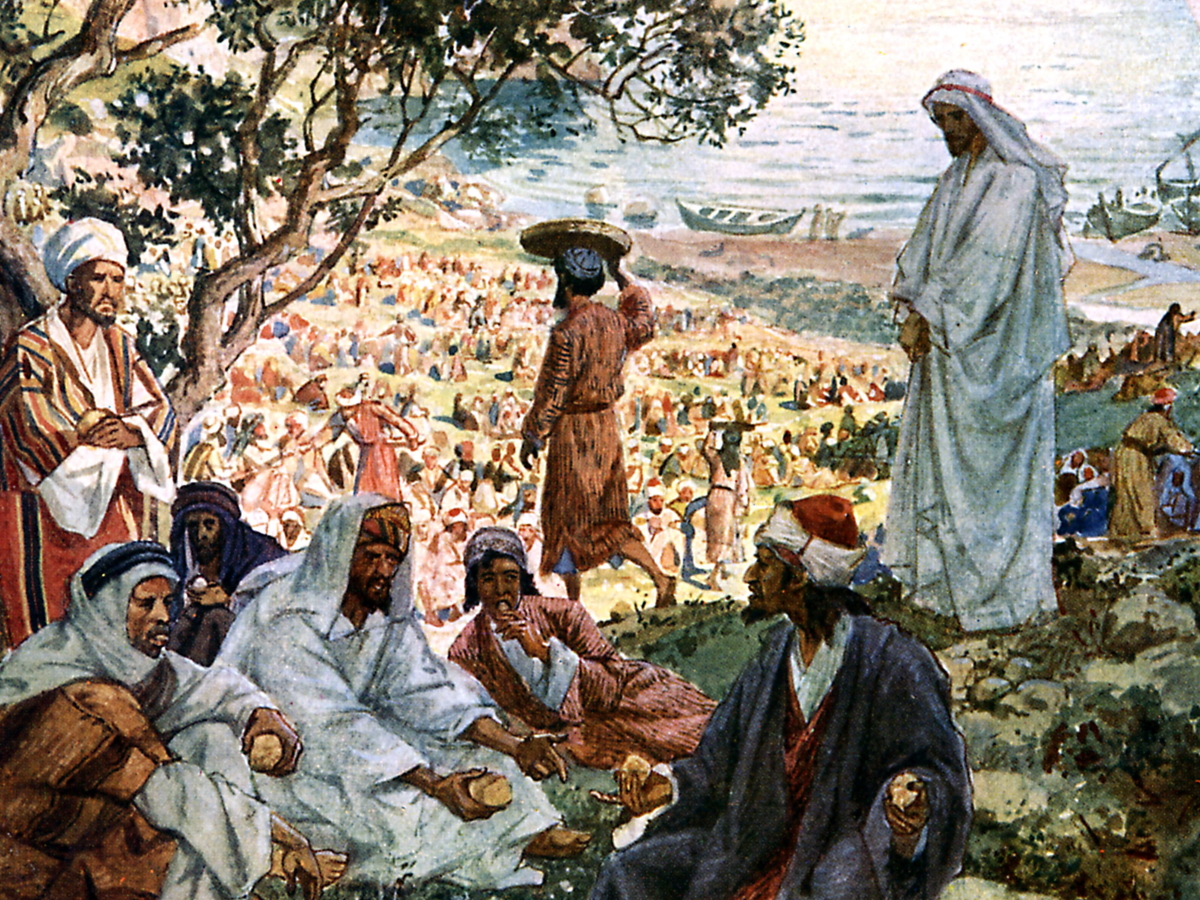 Jesus feeds the hungry 5,000 ... from 7 loaves of bread and a few fish Peter trying to walk on water toward Jesus when he sees Jesus walking on the water
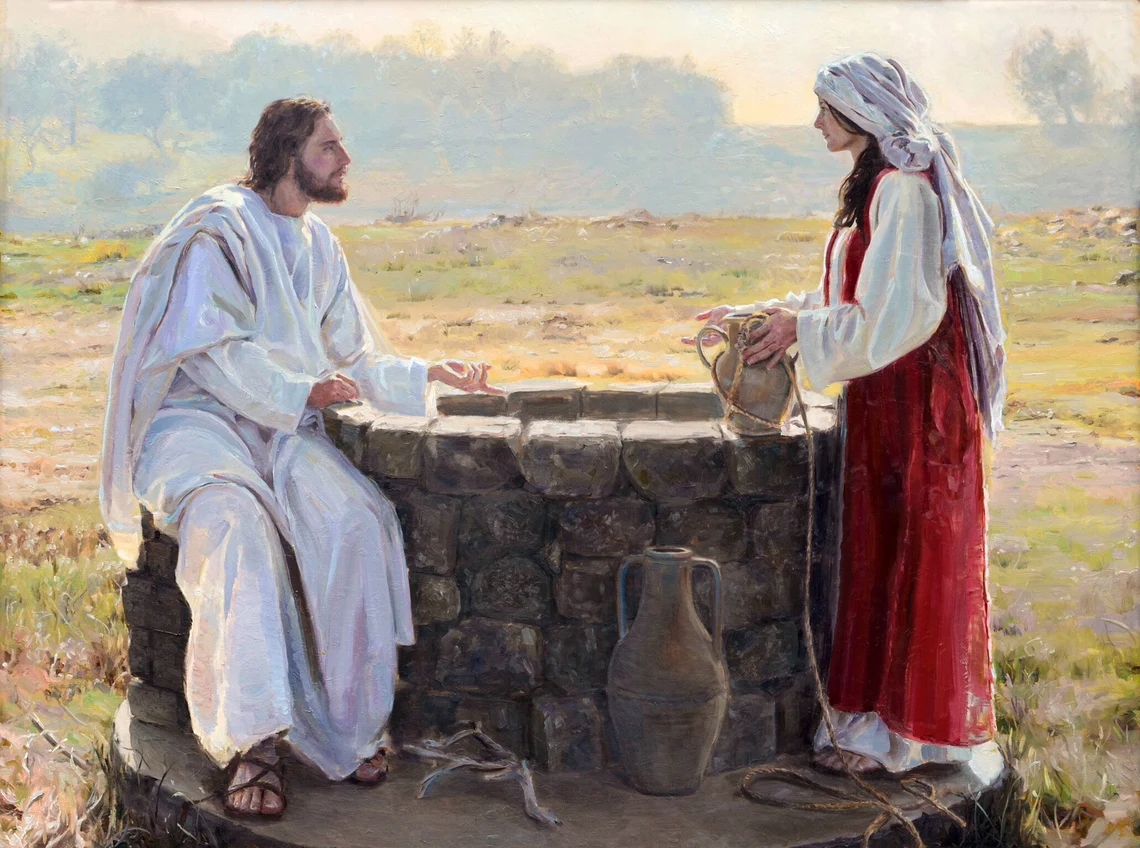
Jesus inspires a rejected Samaritan woman at the well Jesus heals the paralytic at the Pool of Bethesda
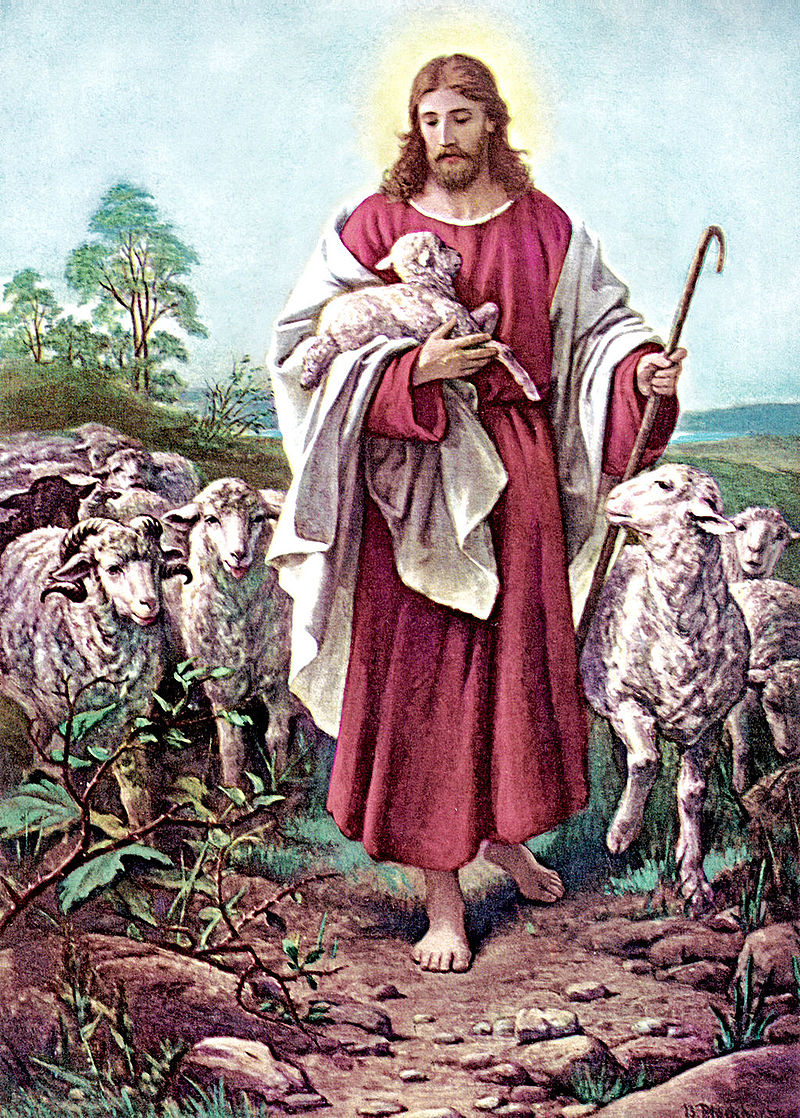
Jesus raises his friend Lazarus from the grave
Matthew21:12-17 / Mark 11:15-19 / Luke 19:45-48 John describes a similar incident occurring early in Jesus's ministry: 2:13-16 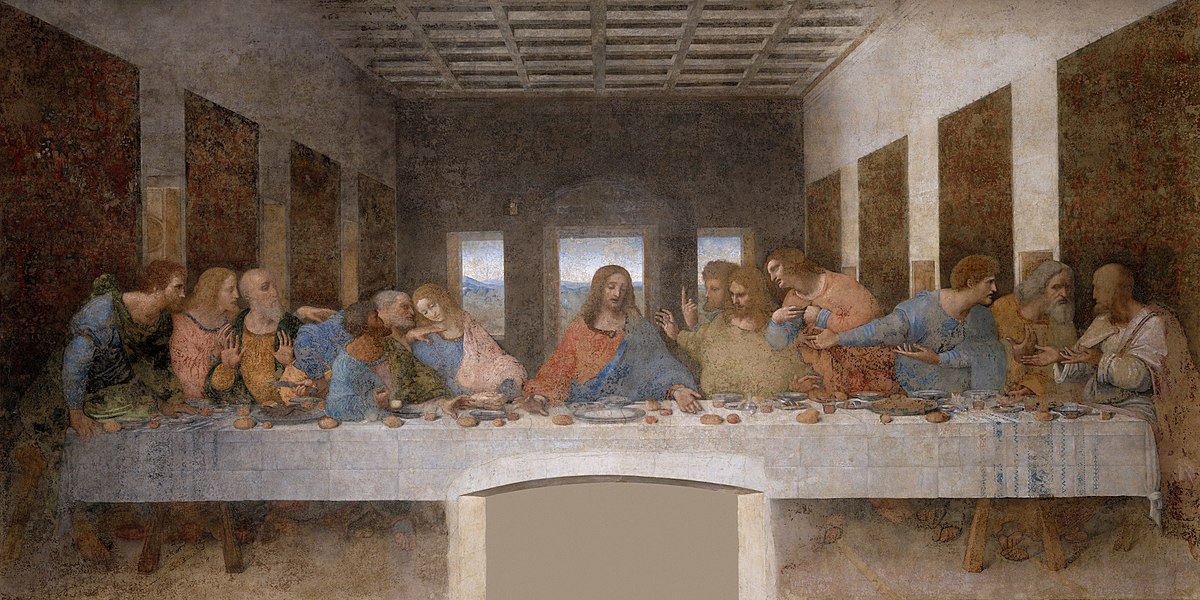 Matthew 26:17-30 / Mark 14:12-26 / Luke 22:7-39 / John 13:1-17:26 (or is it only to John 14:31?) Matthew 26:36-46 / Luke 22:39-46 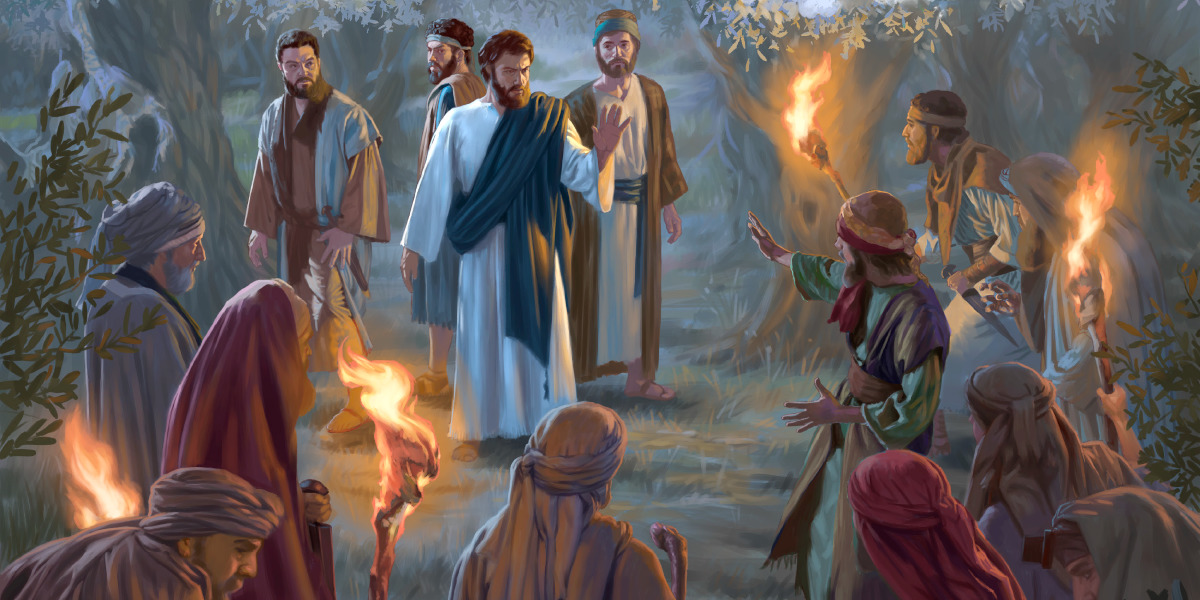 Matthew 26:46-56 / Luke 22:47-54 / John 18:1-12 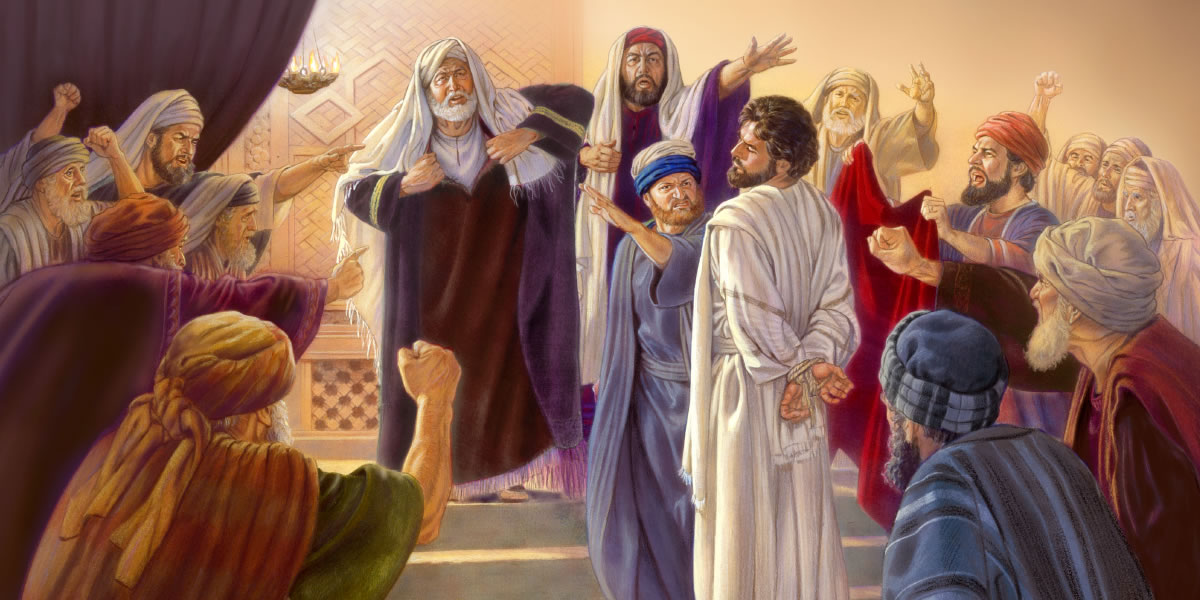

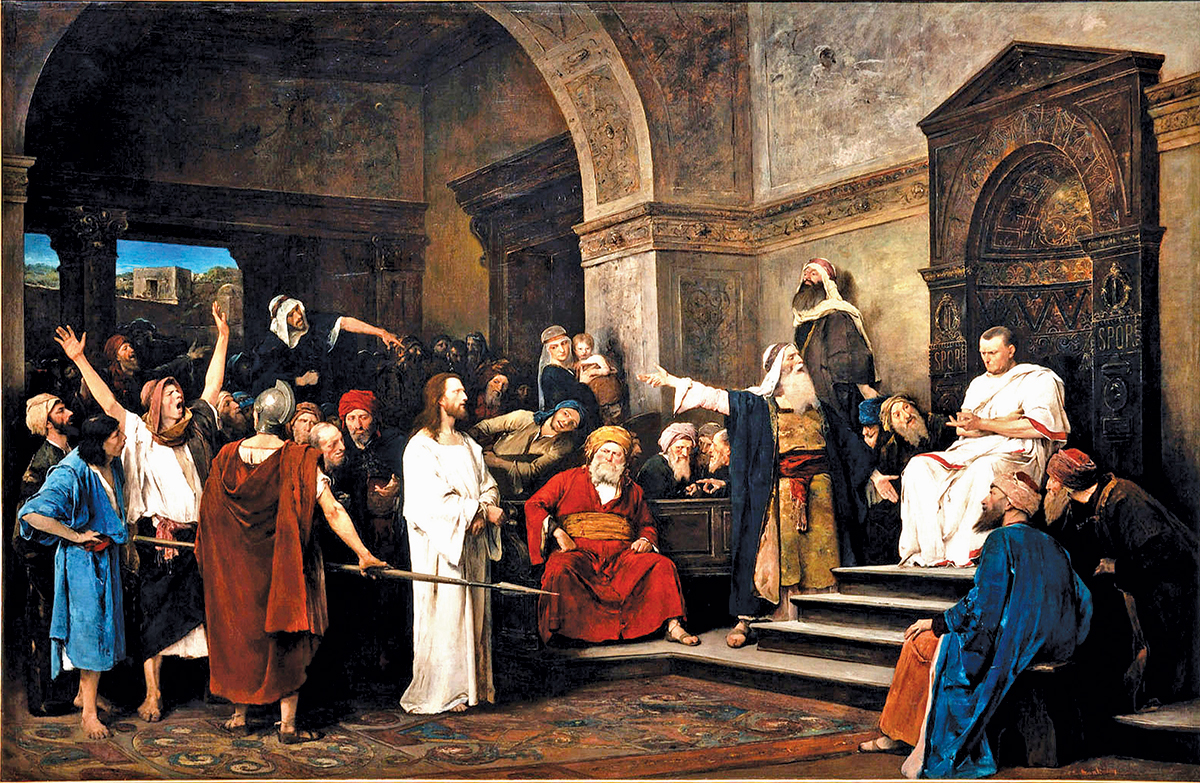 Jesus brought to Pilate for trial ... Jewish authorities presenting him as an insurrectionist 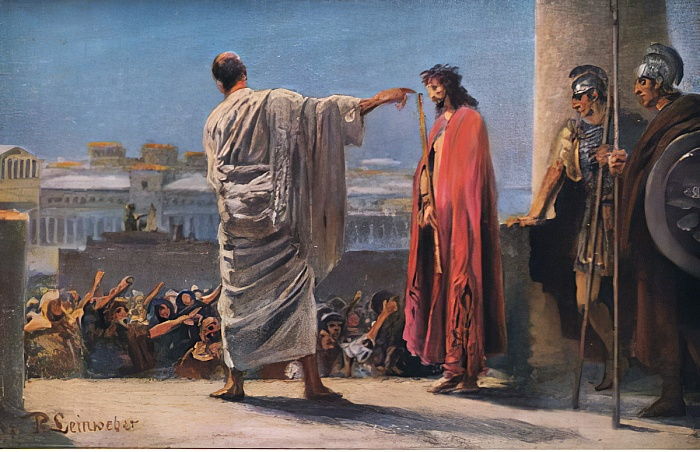 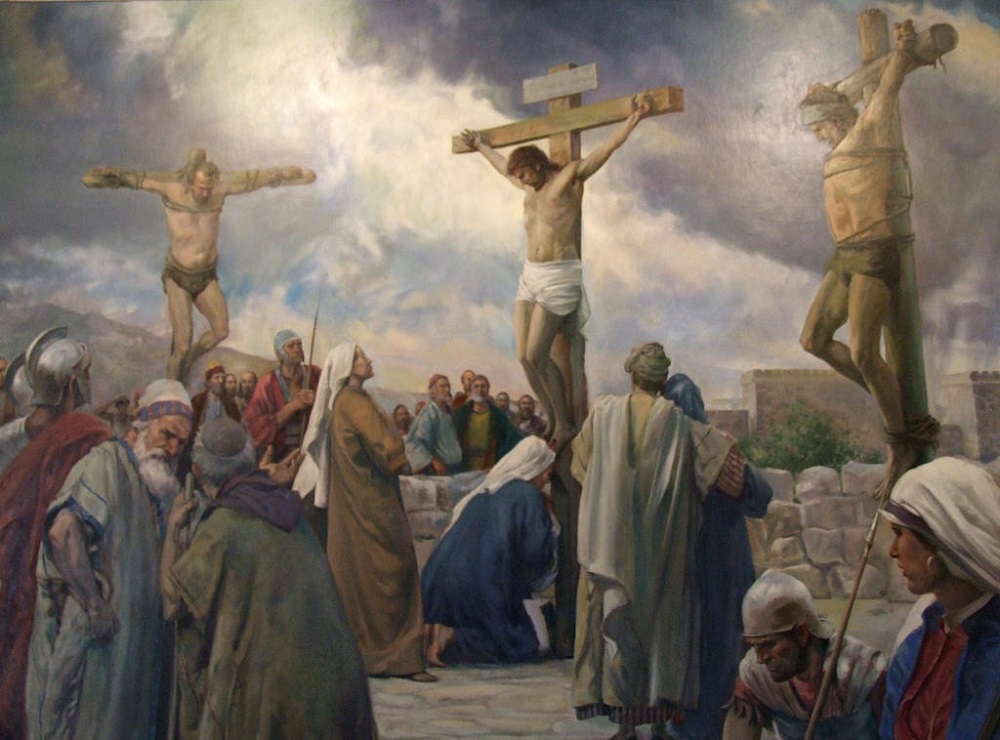 Jesus is put to death on a Roman cross ... along with two thieves (Good Friday) 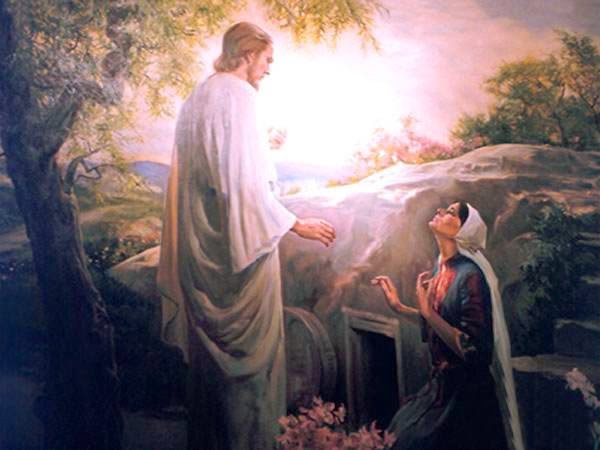 The Resurrected Lord appears to Mary Magladen (Easter morning)
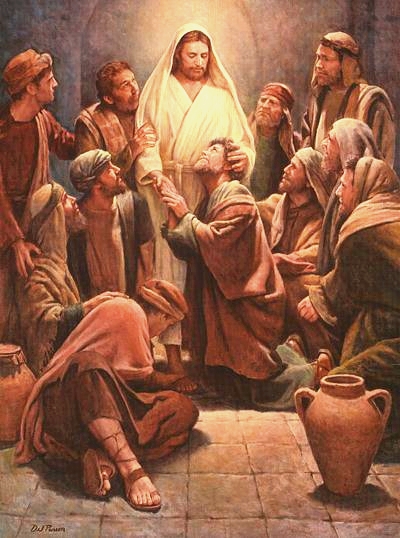 The Resurrected Lord appears to his disciples Matthew 28:16-20 / Mark 16:14-20 / Luke 24:36-53 / John 20:19-31 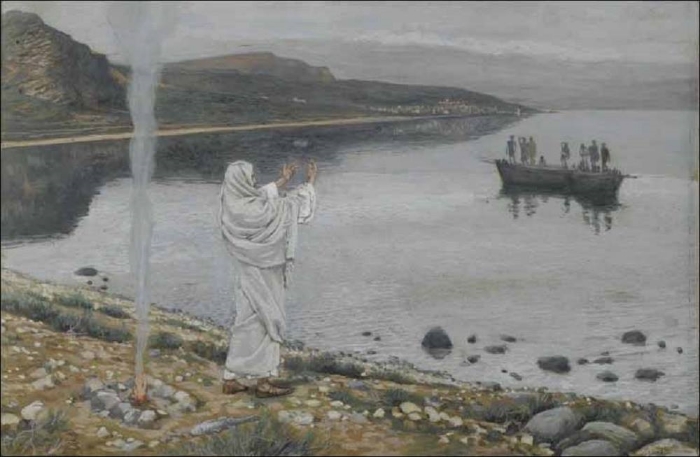 The Resurrected Lord appears again to his disciples in Galilee
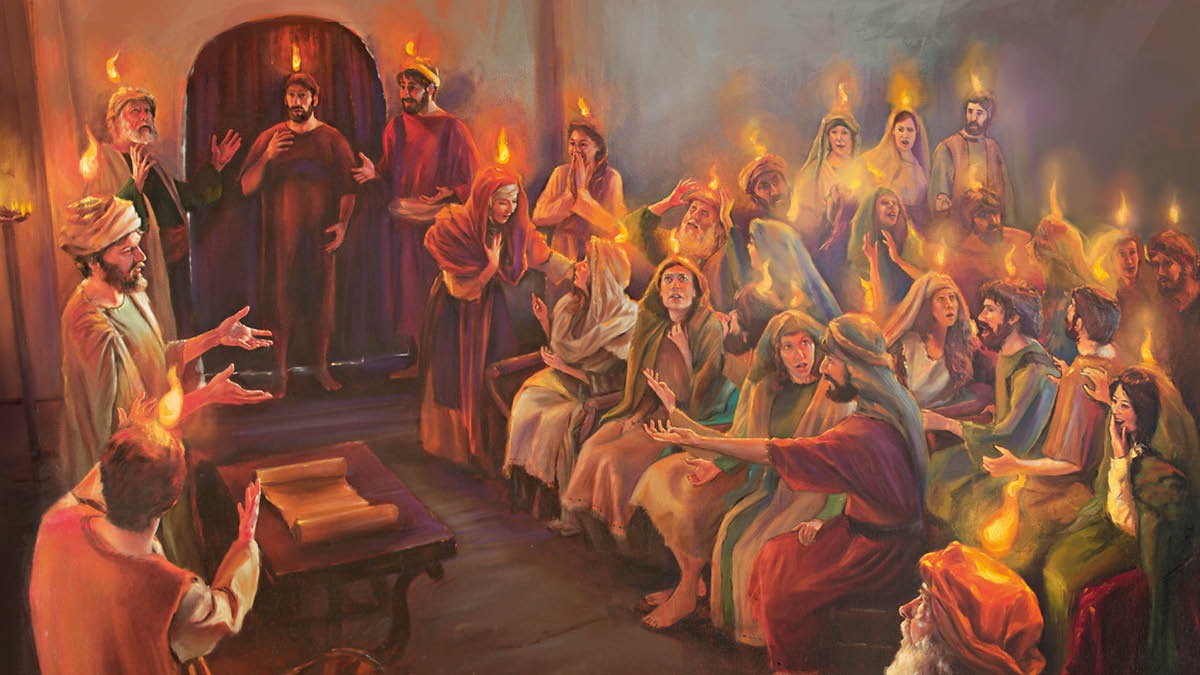
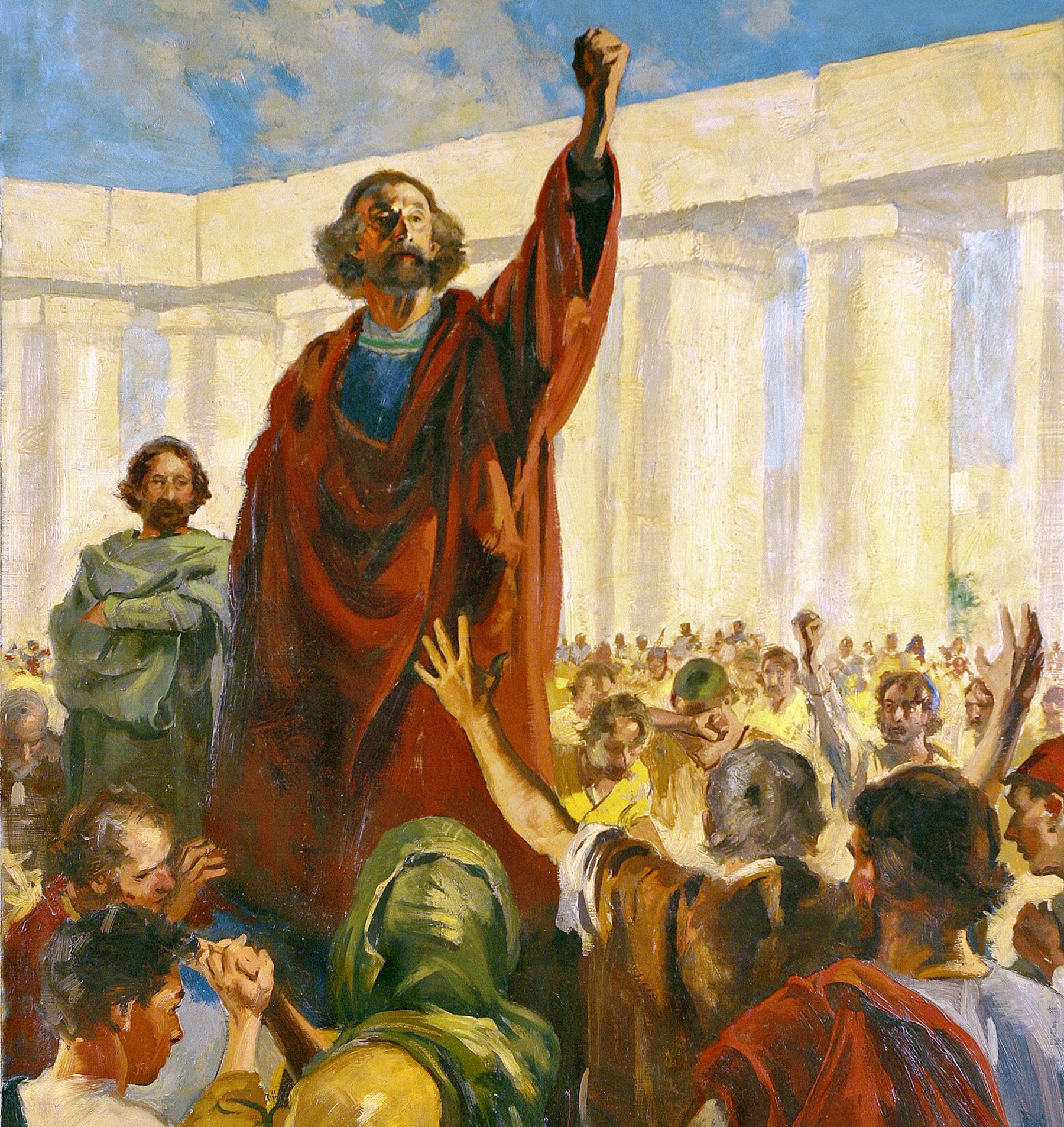
That same day, Peter – empowered by God's Holy Spirit – preaches Christ's salvation  Go on to the next section: The Early Church
 |



